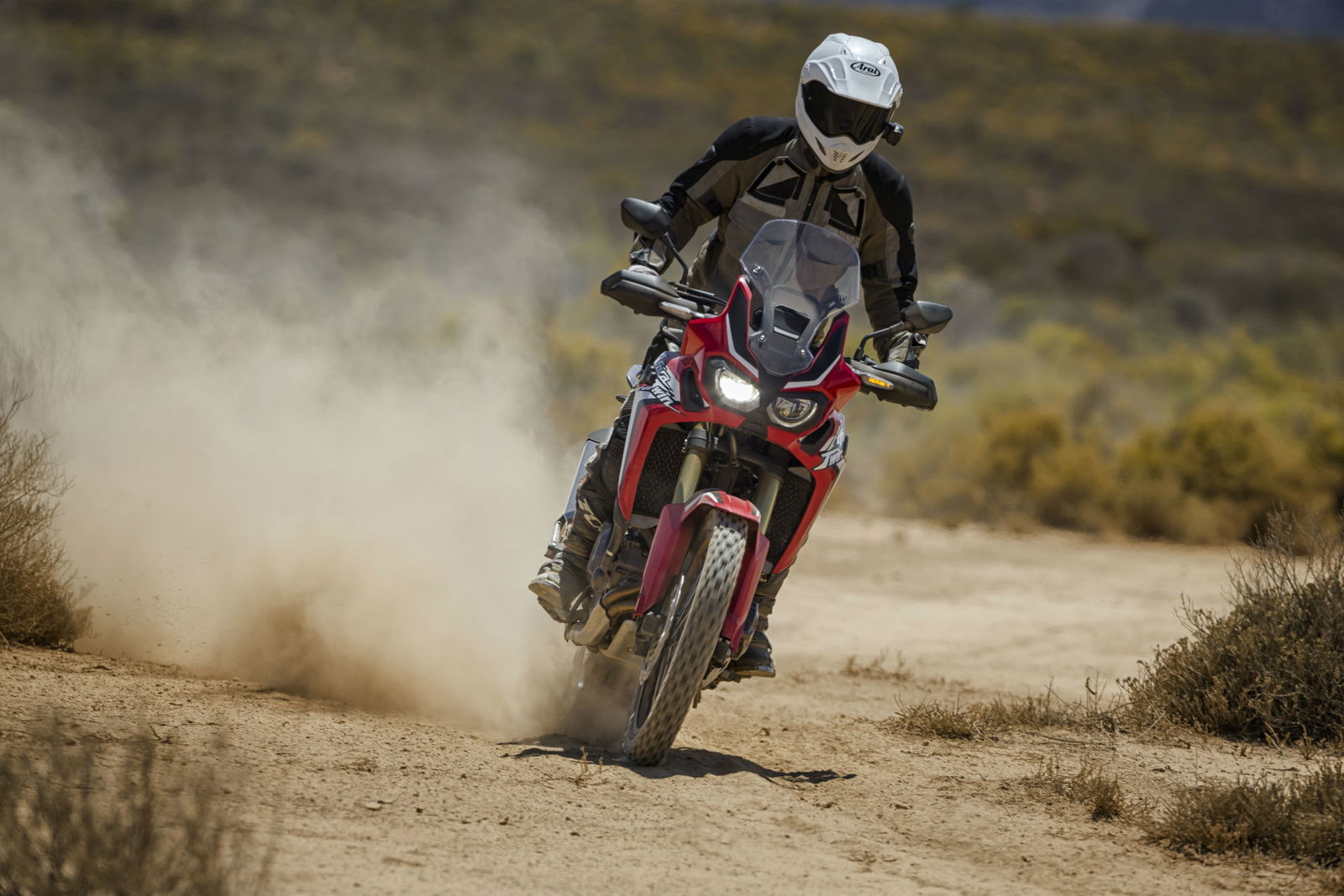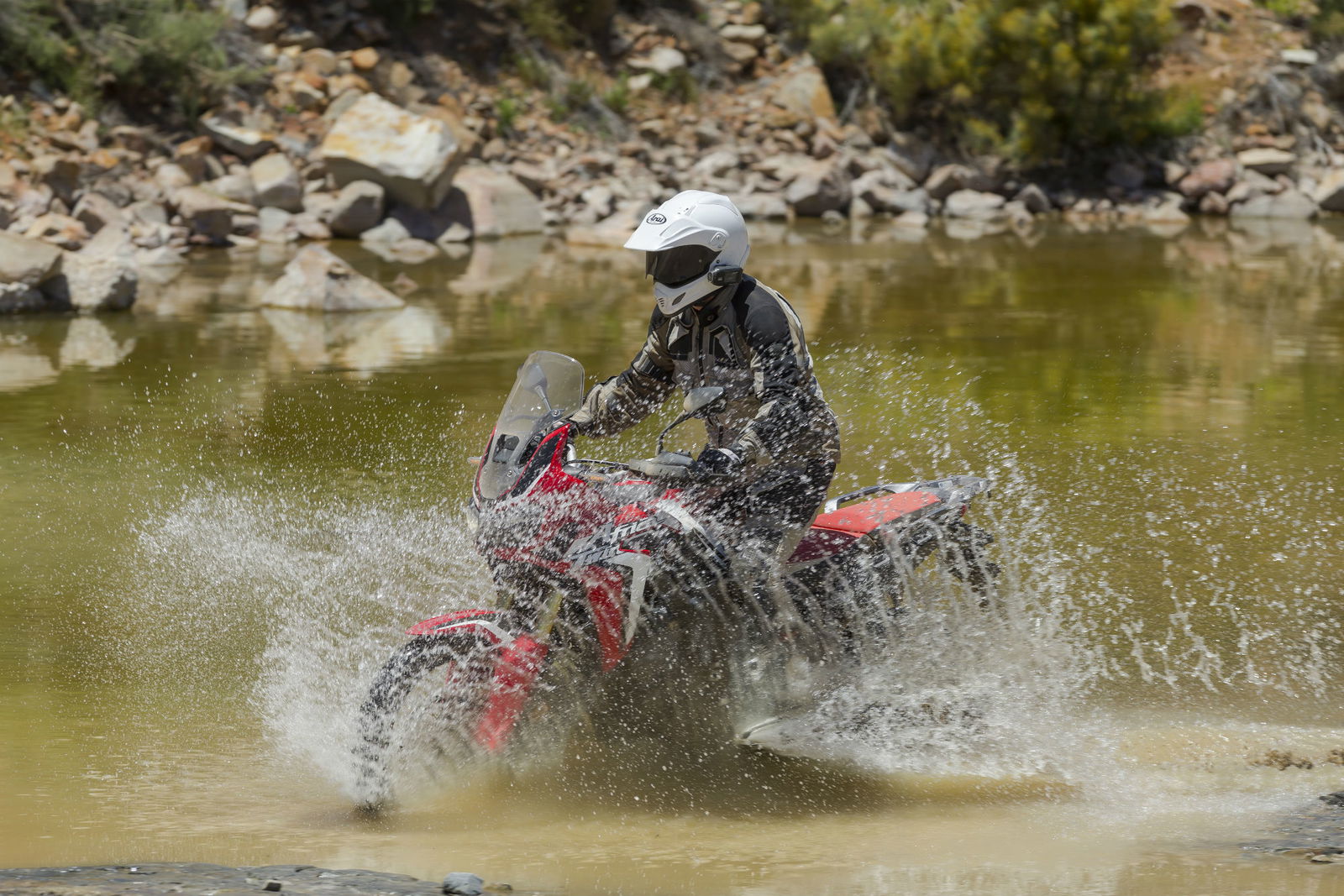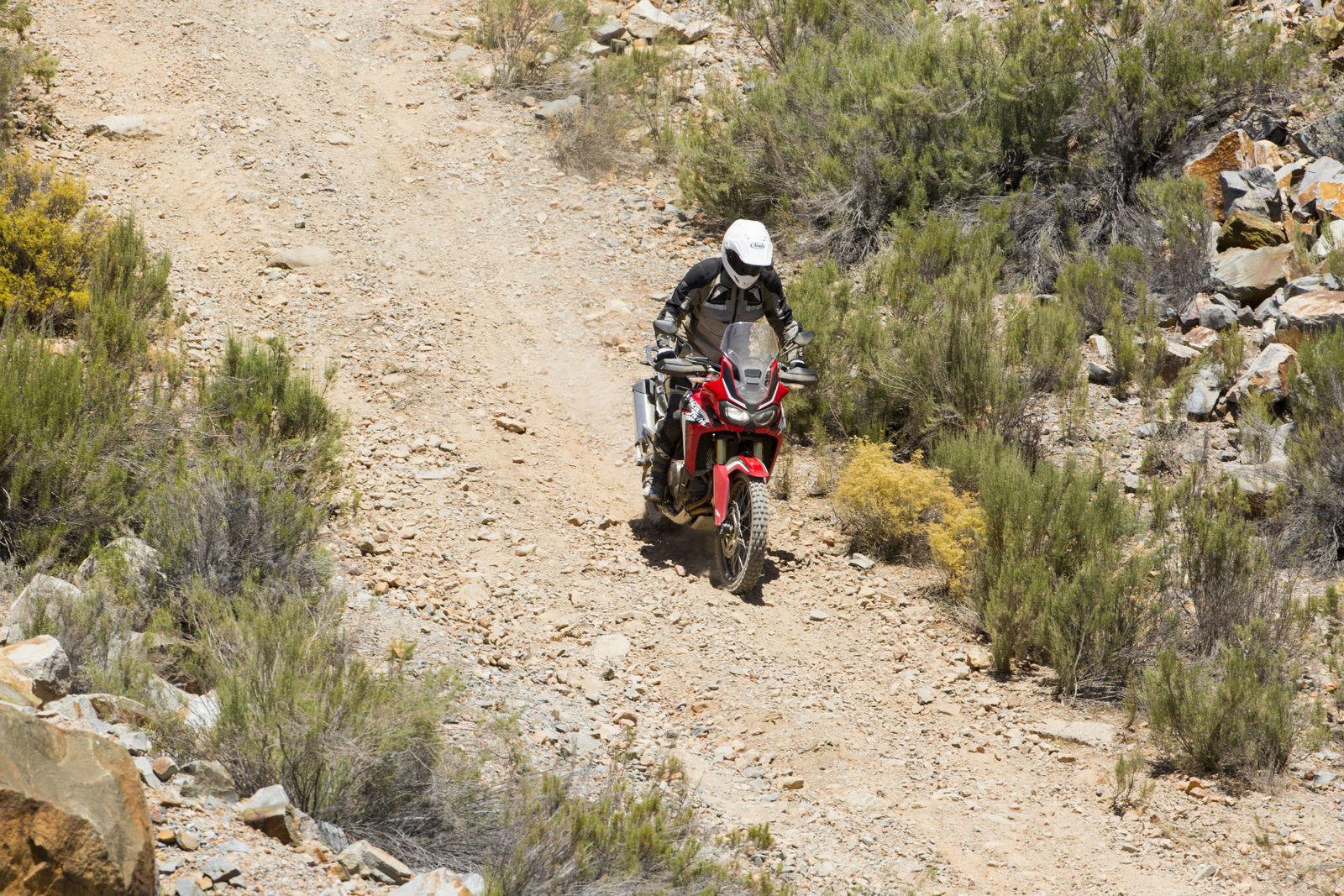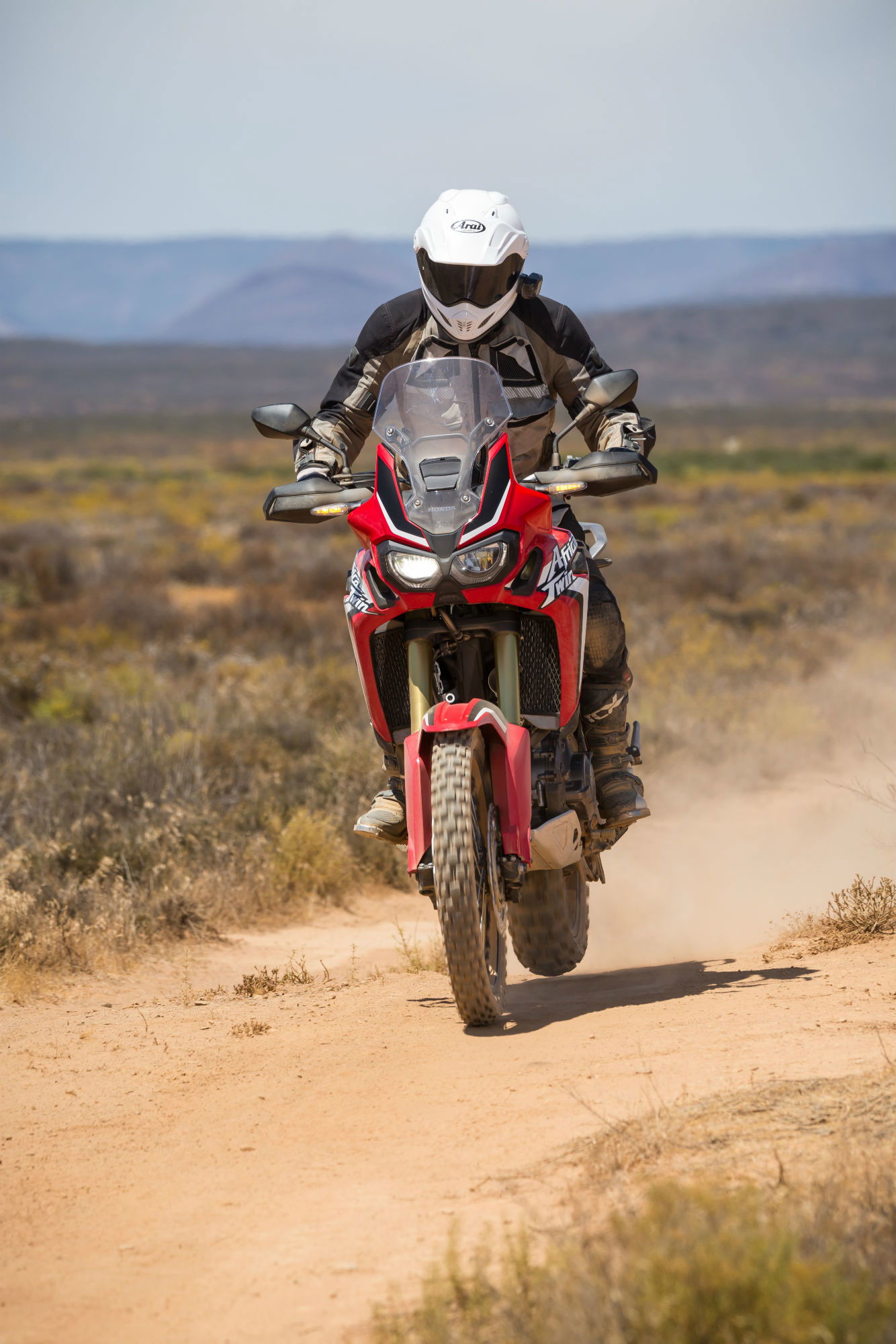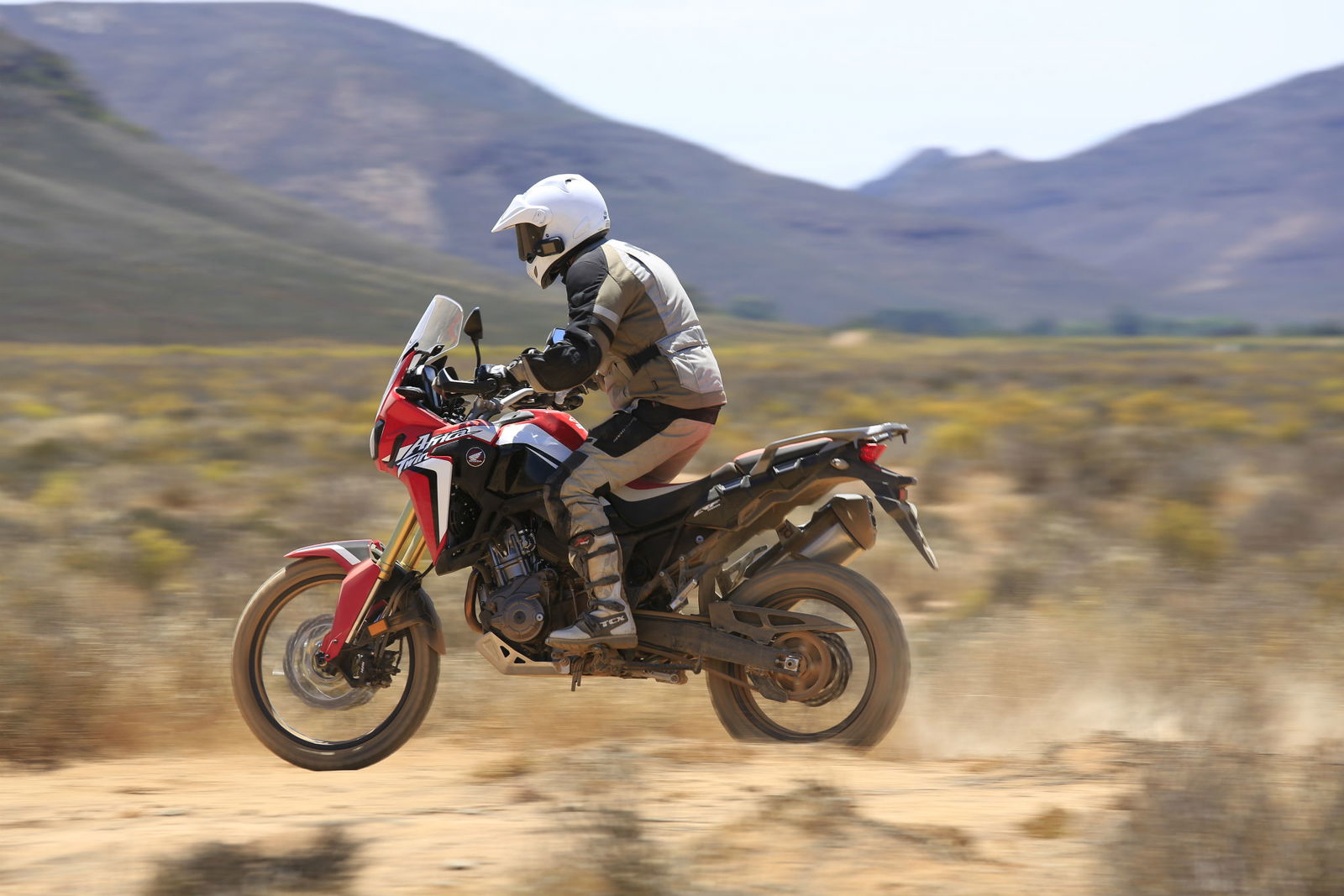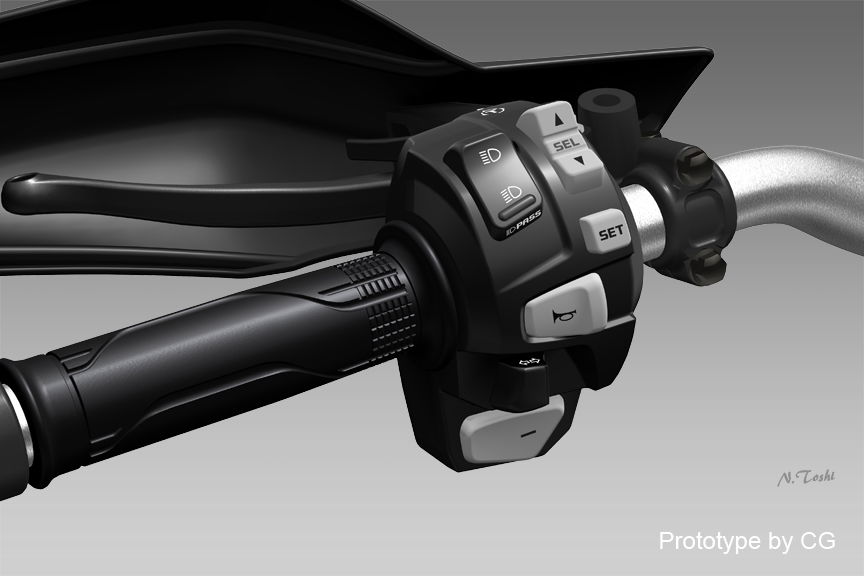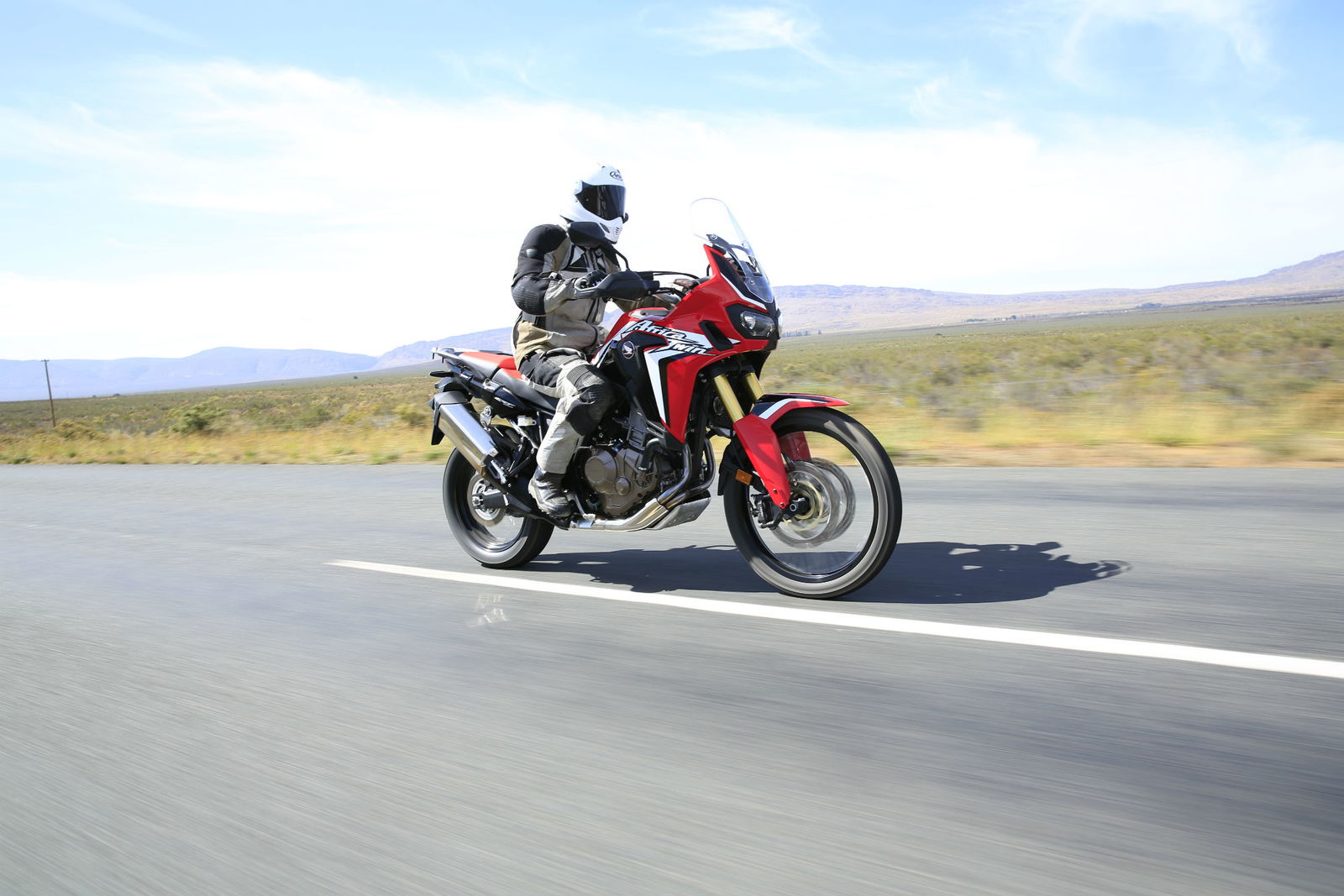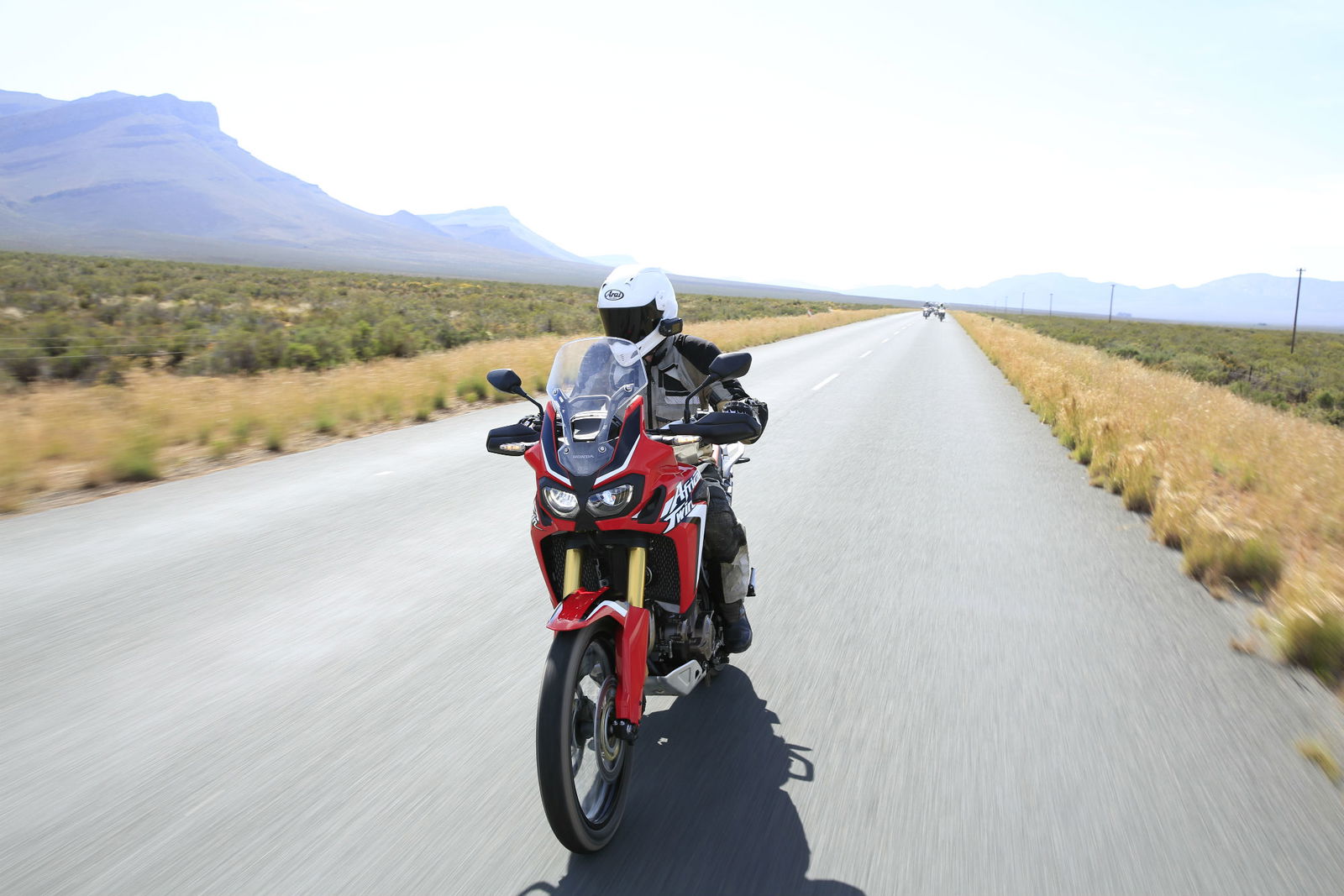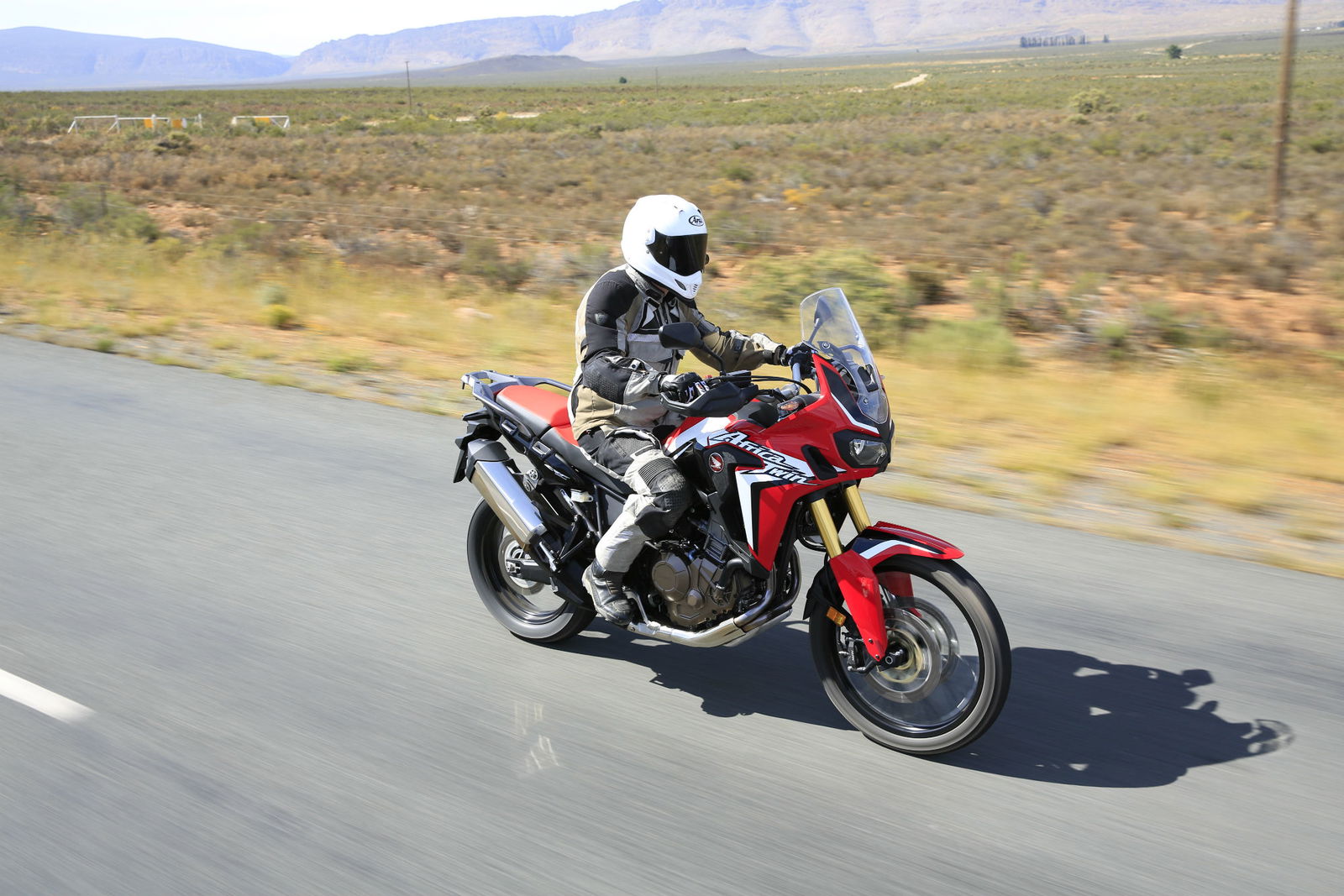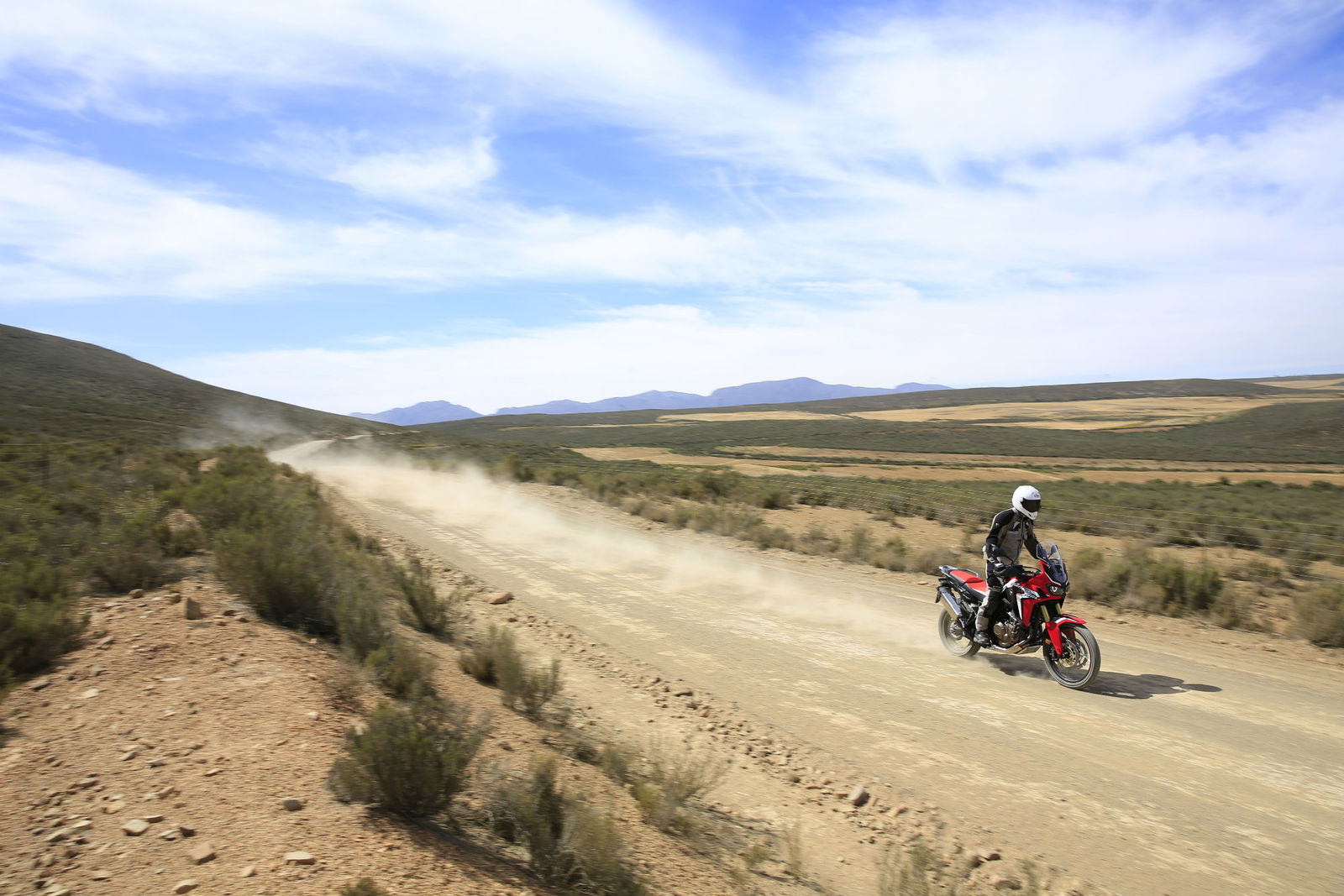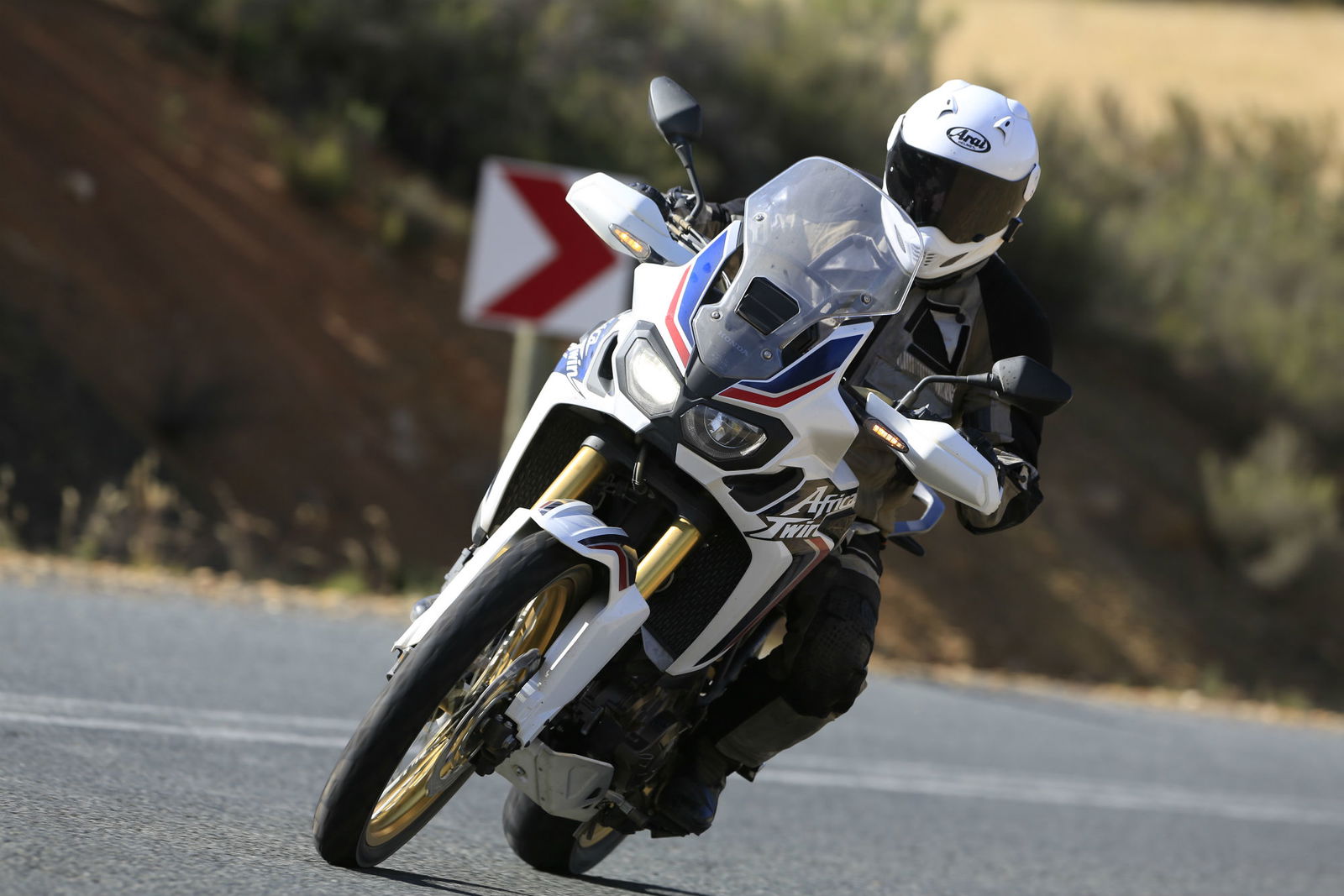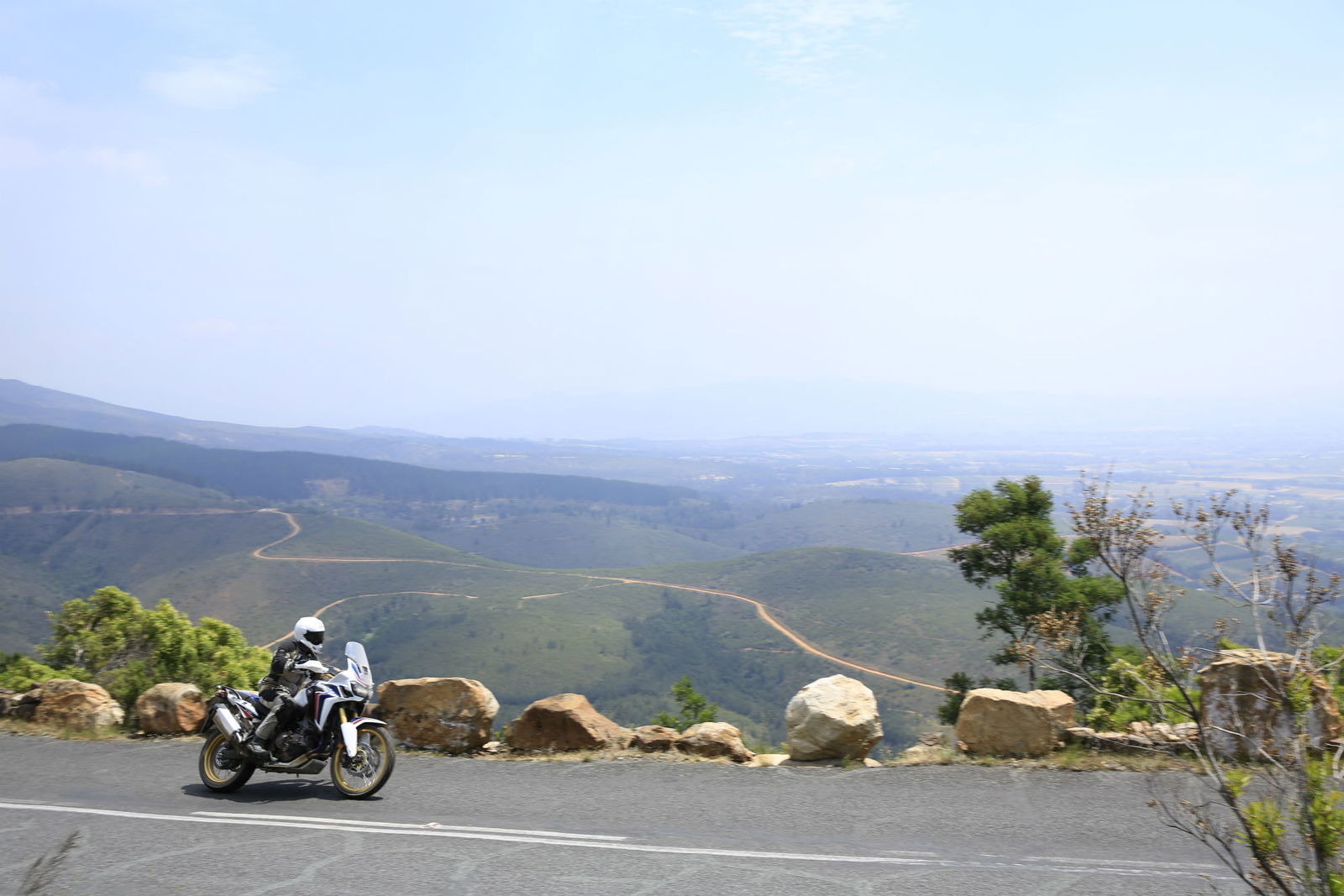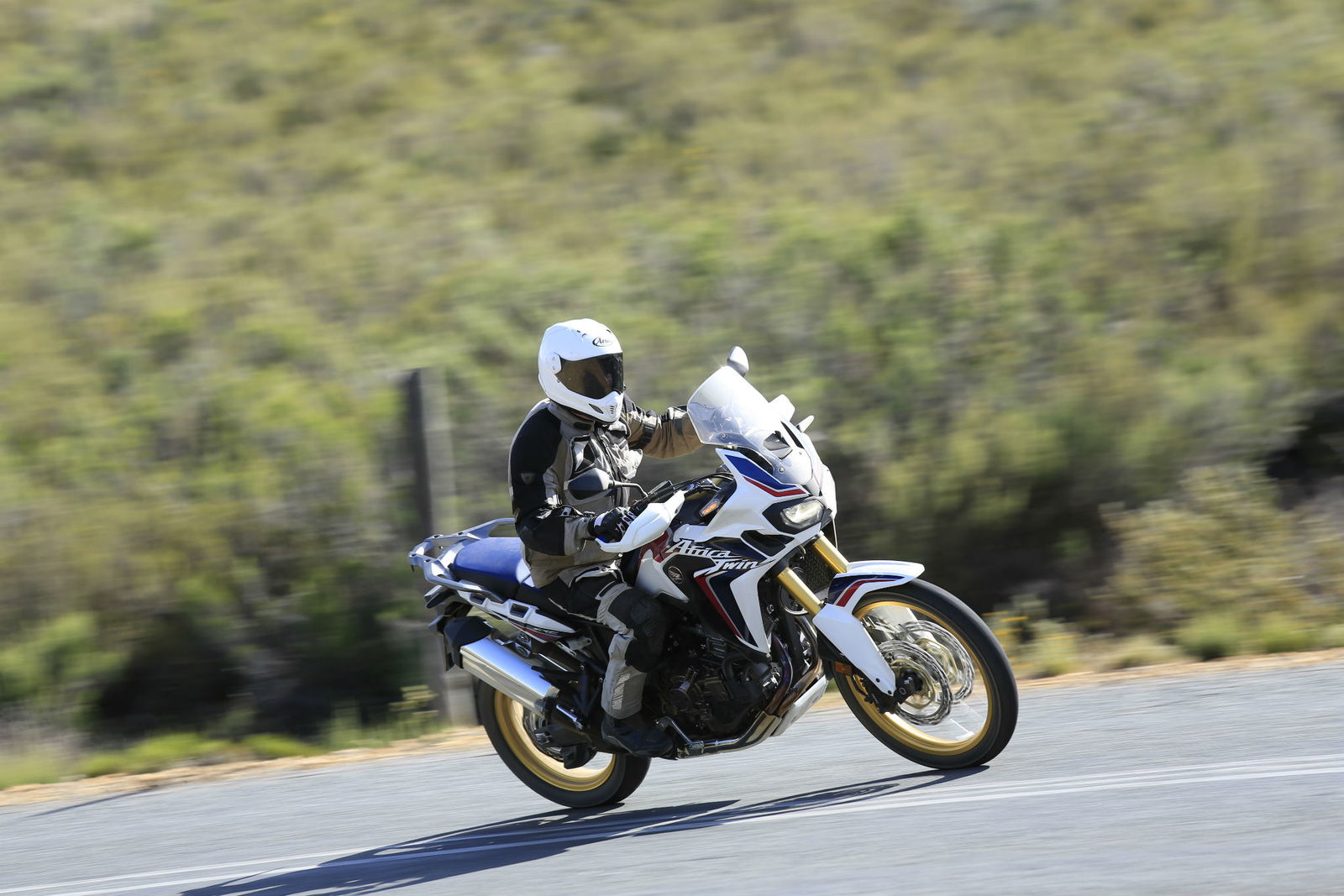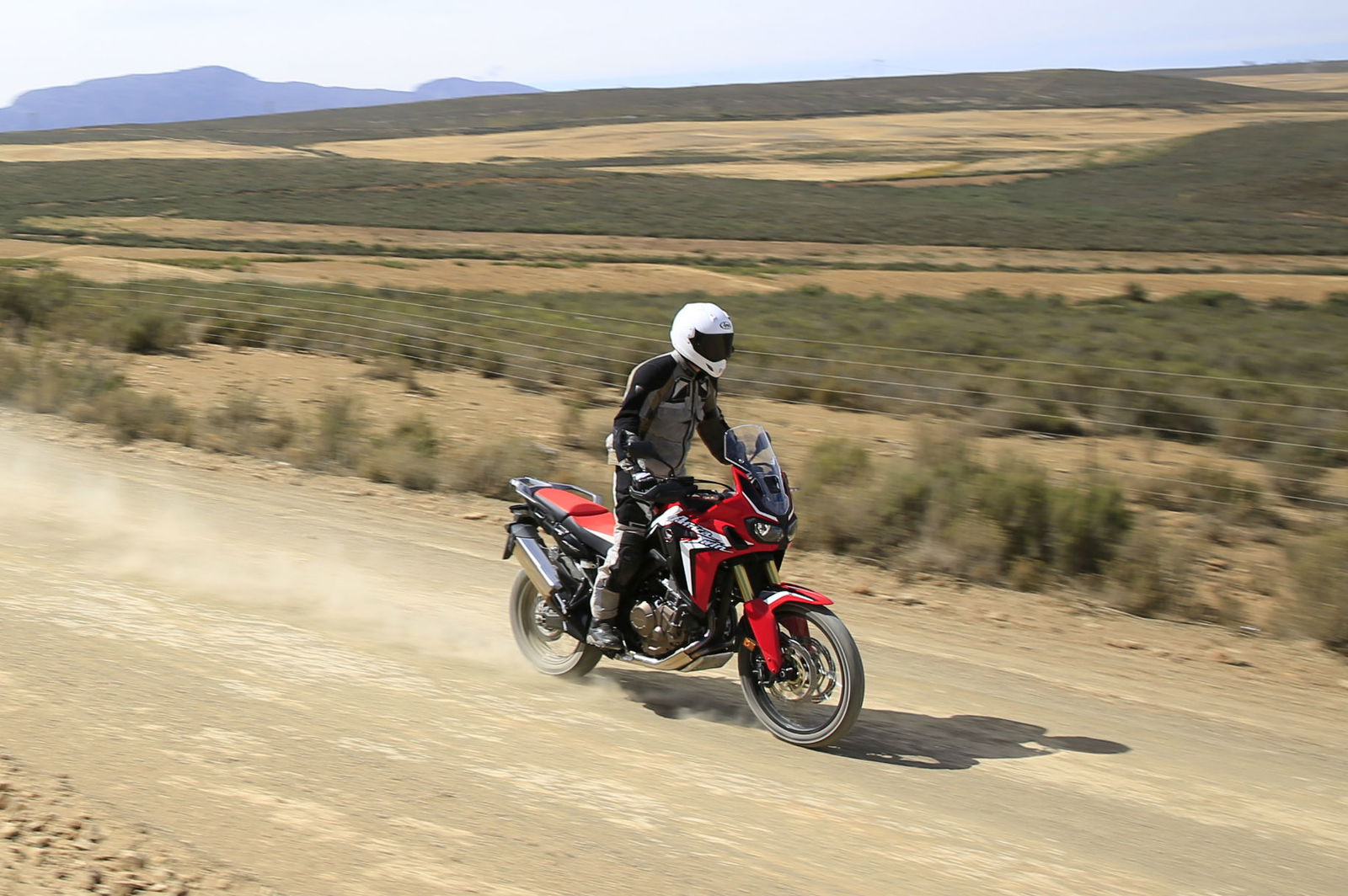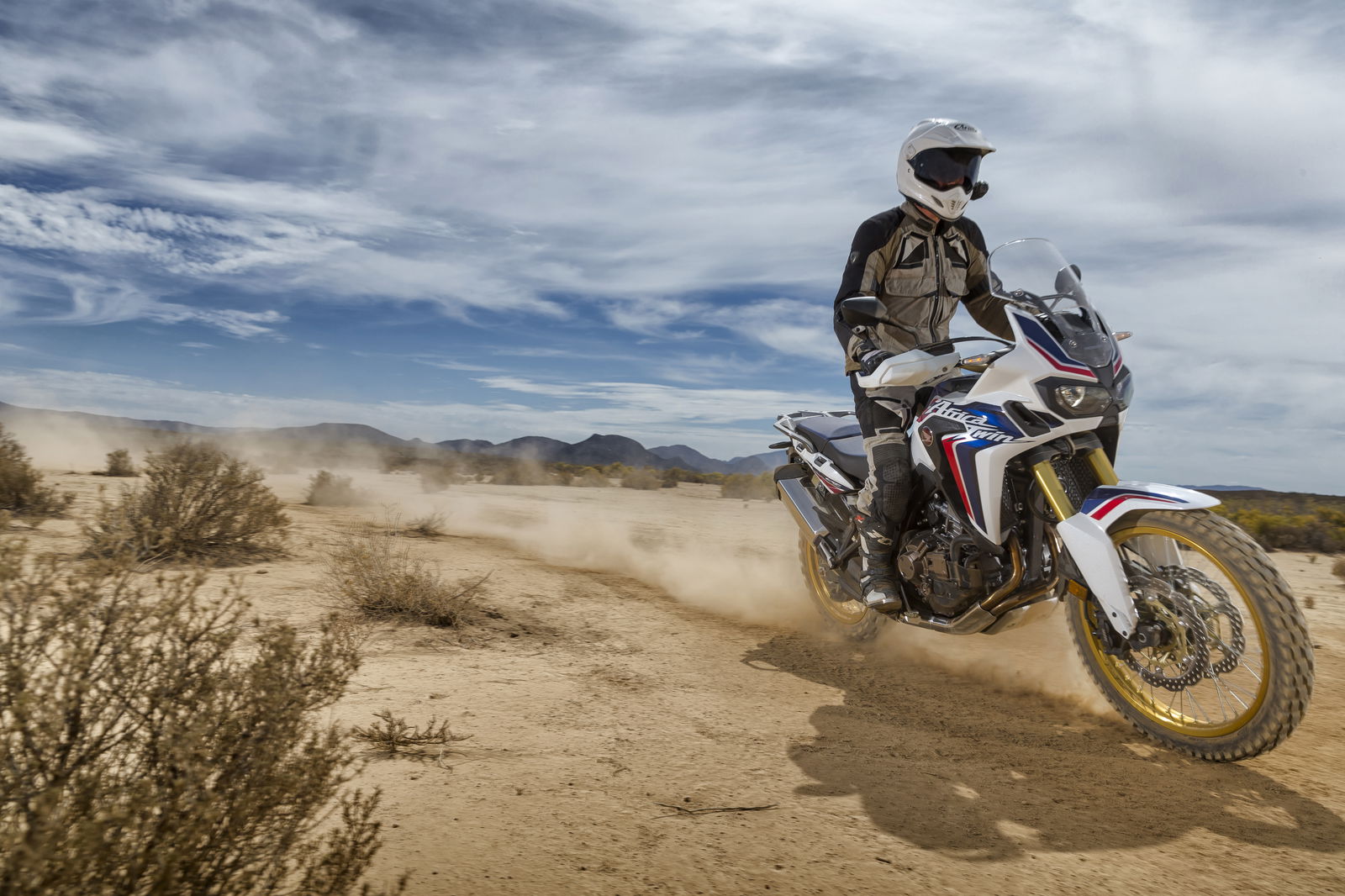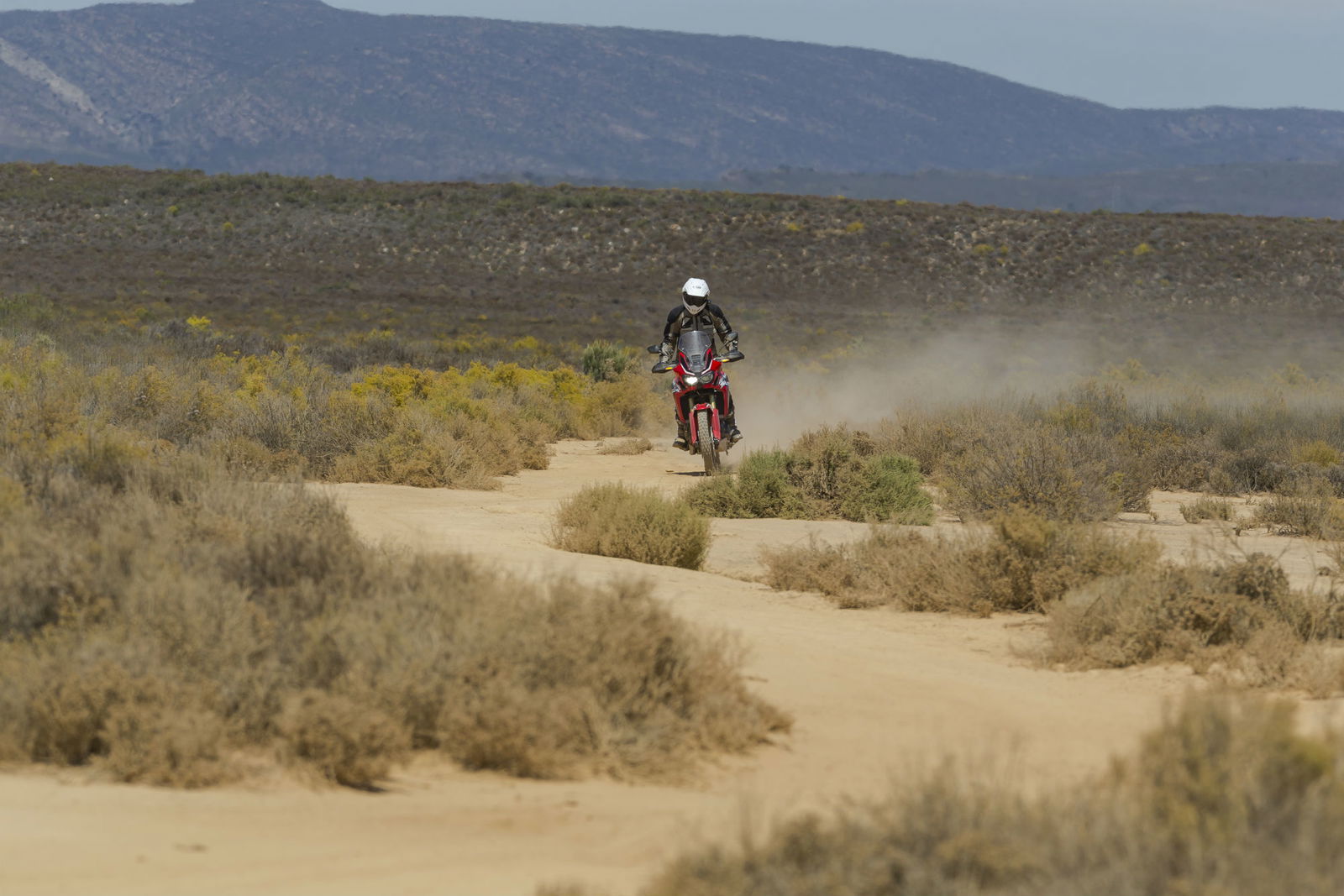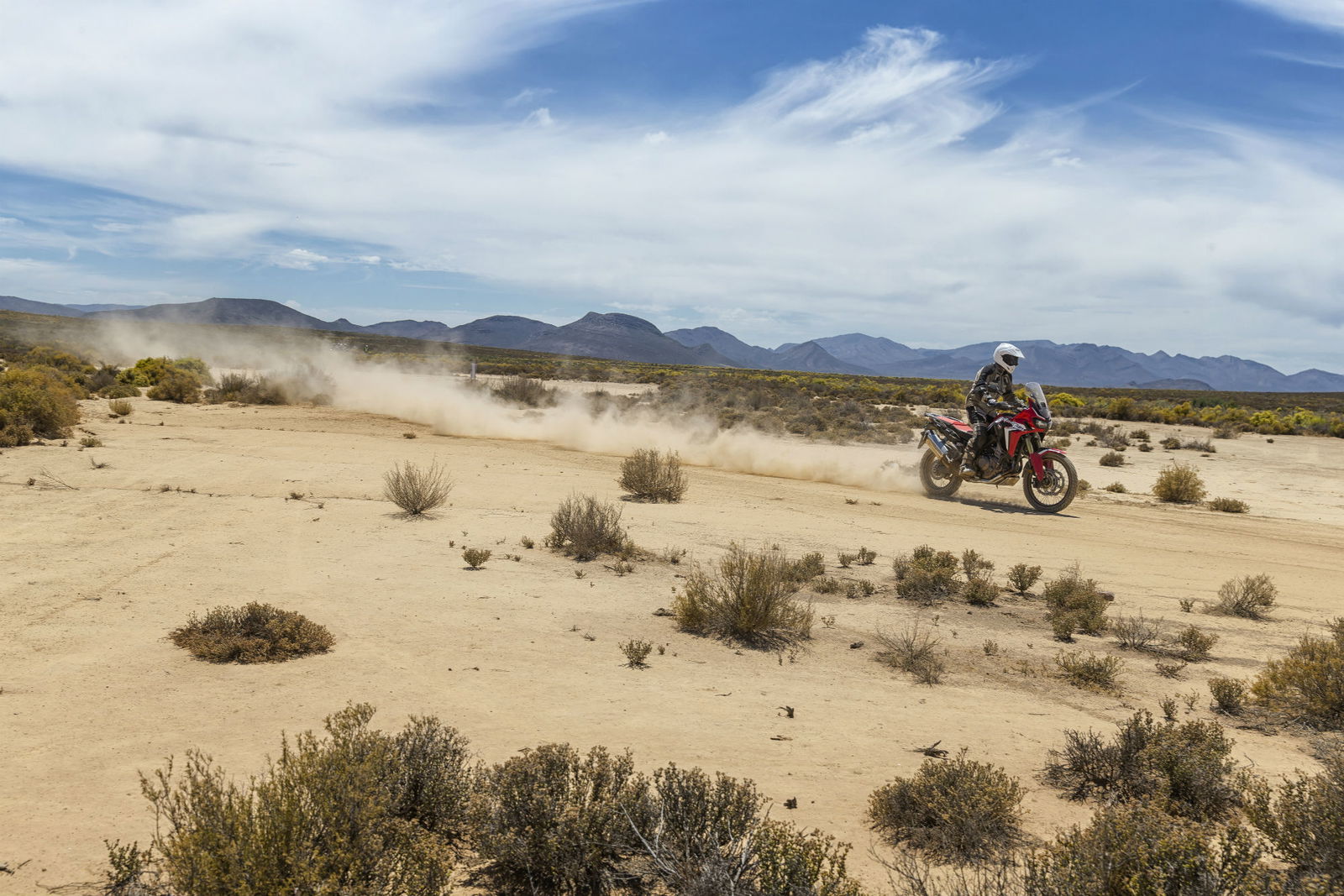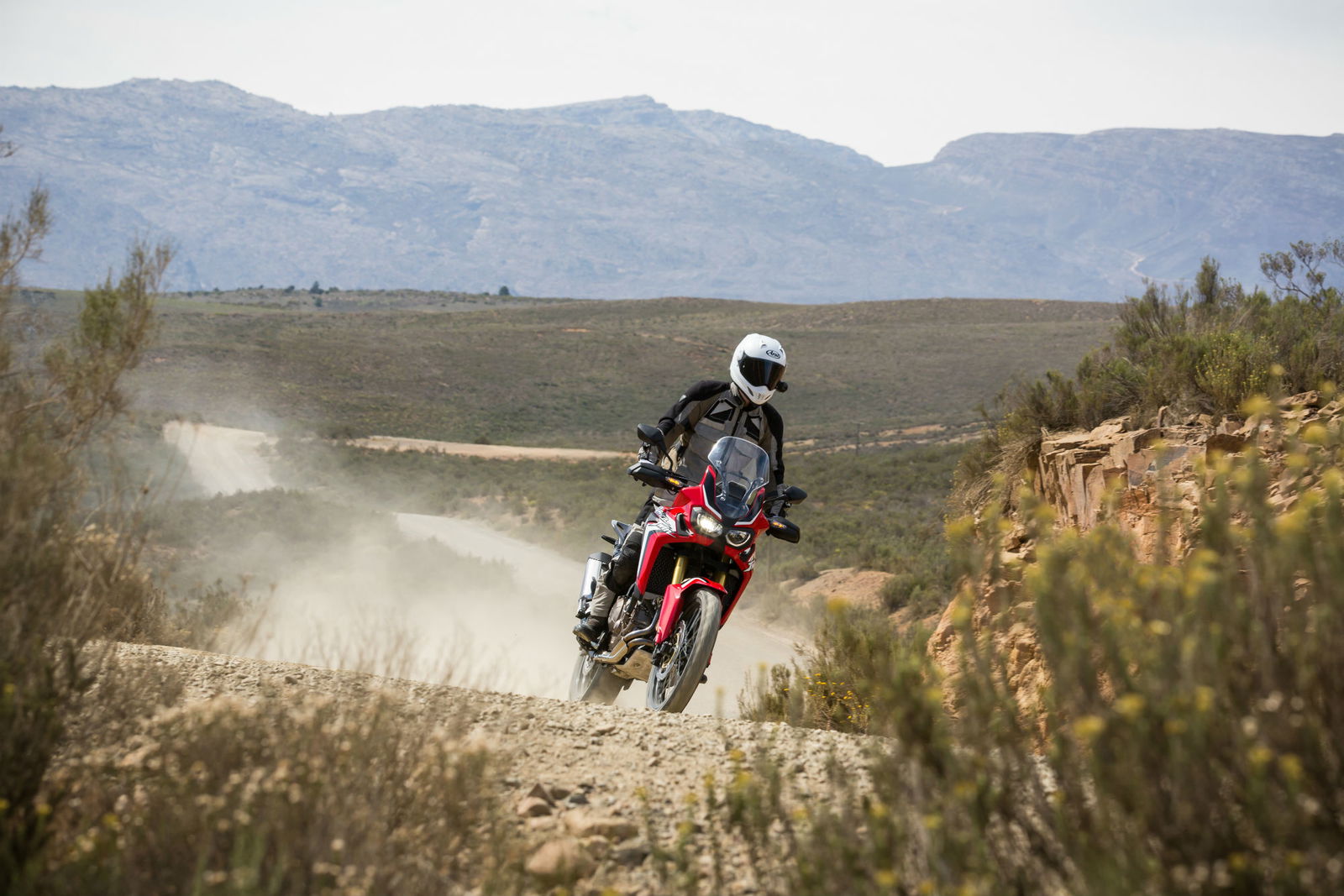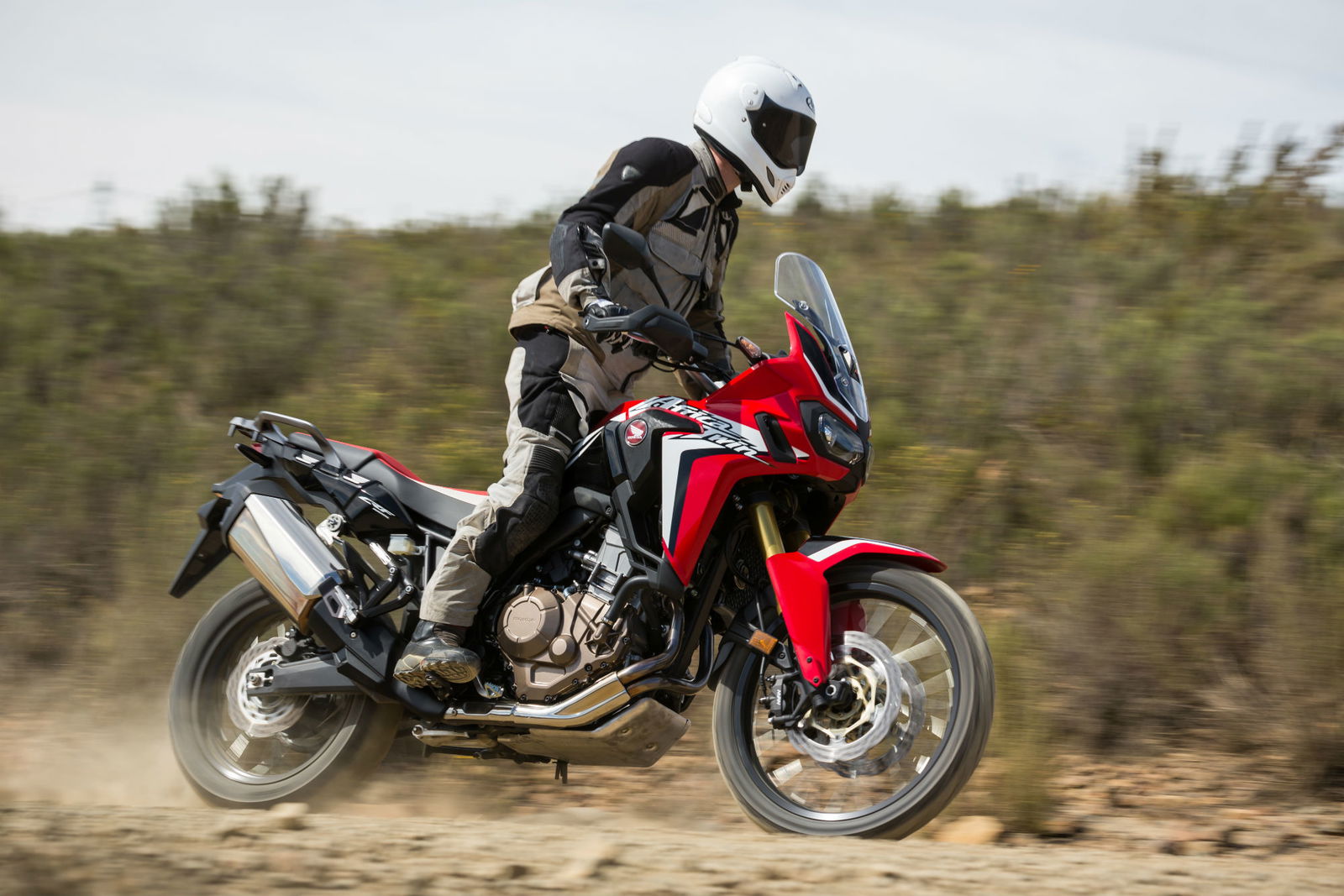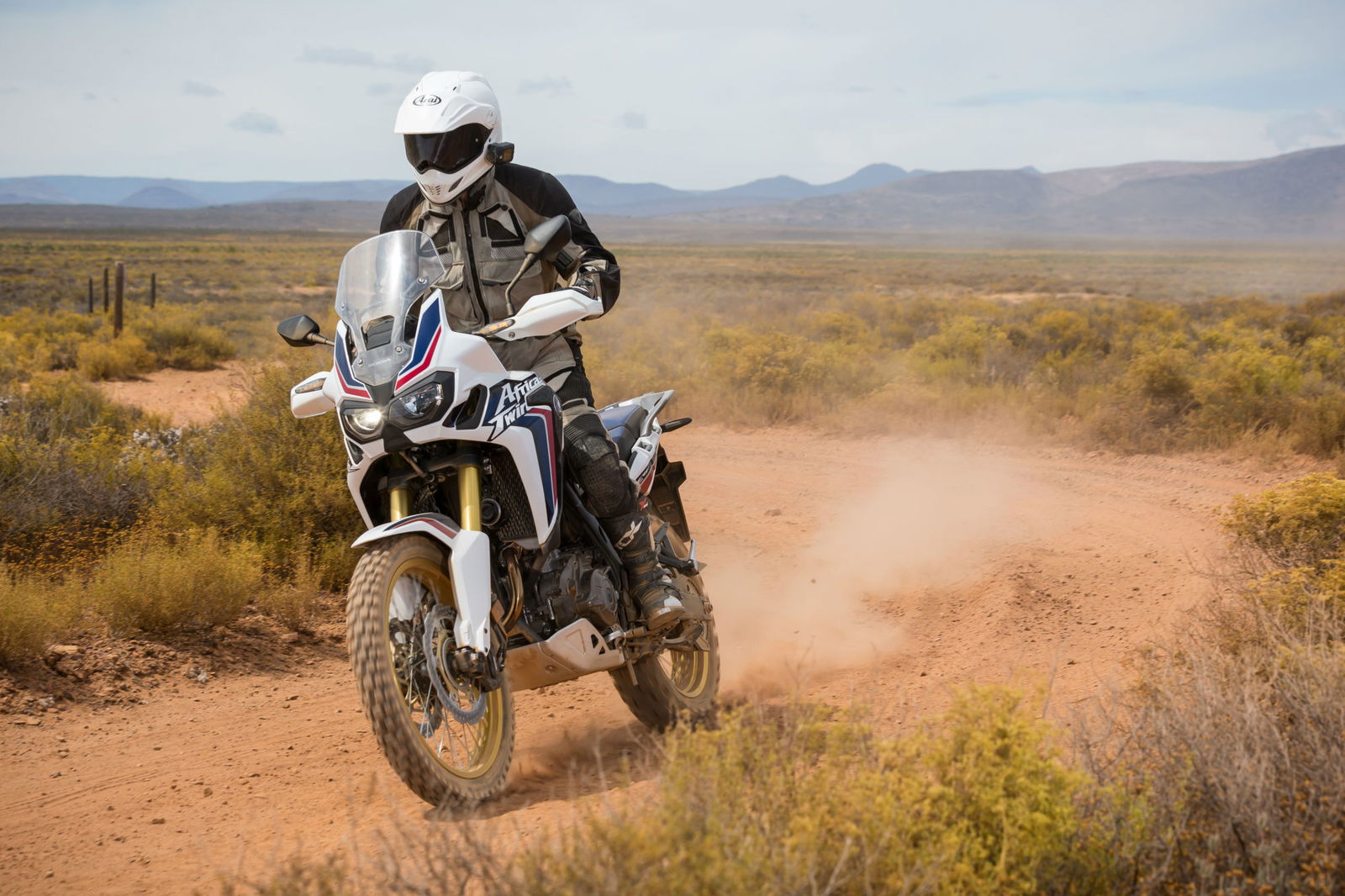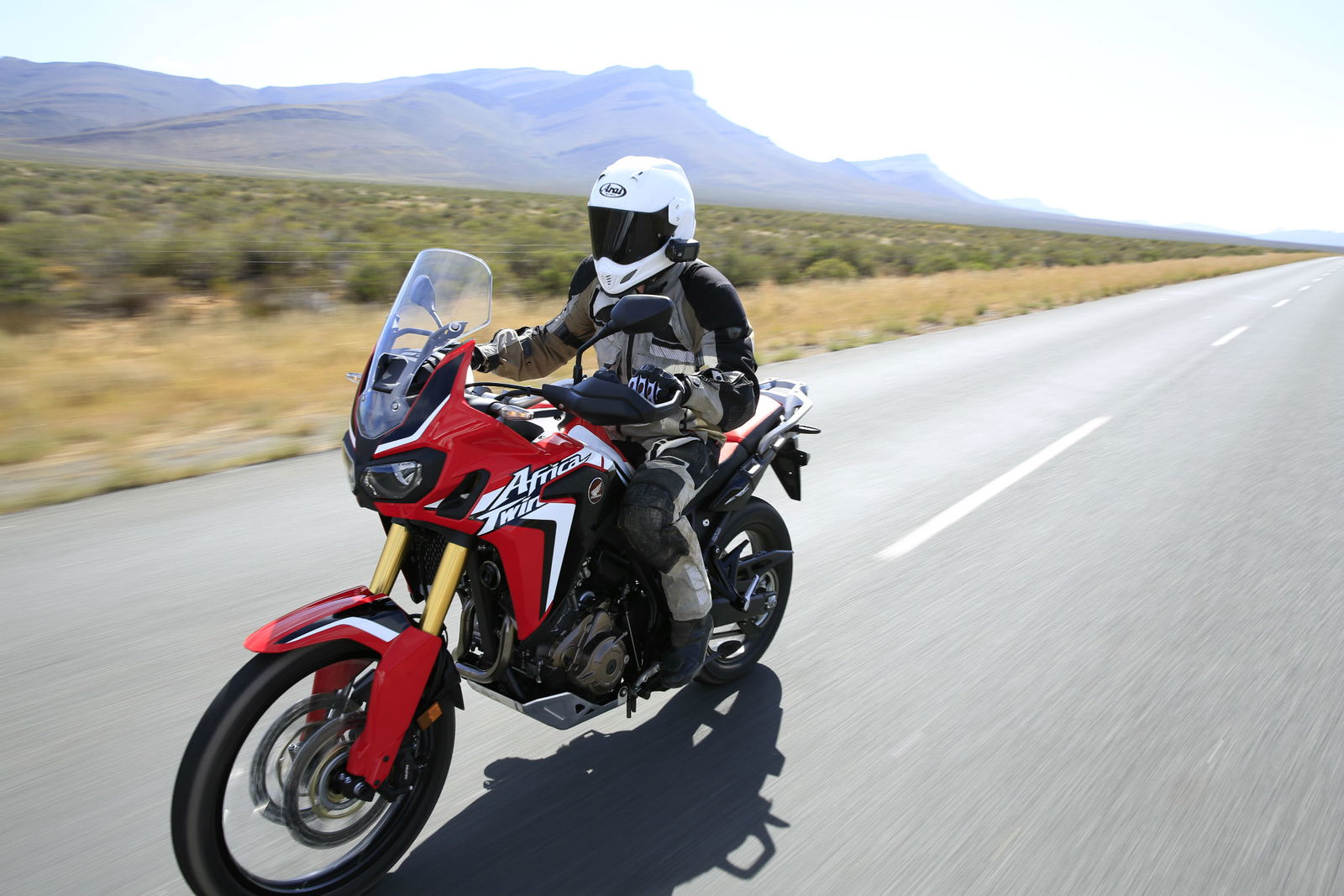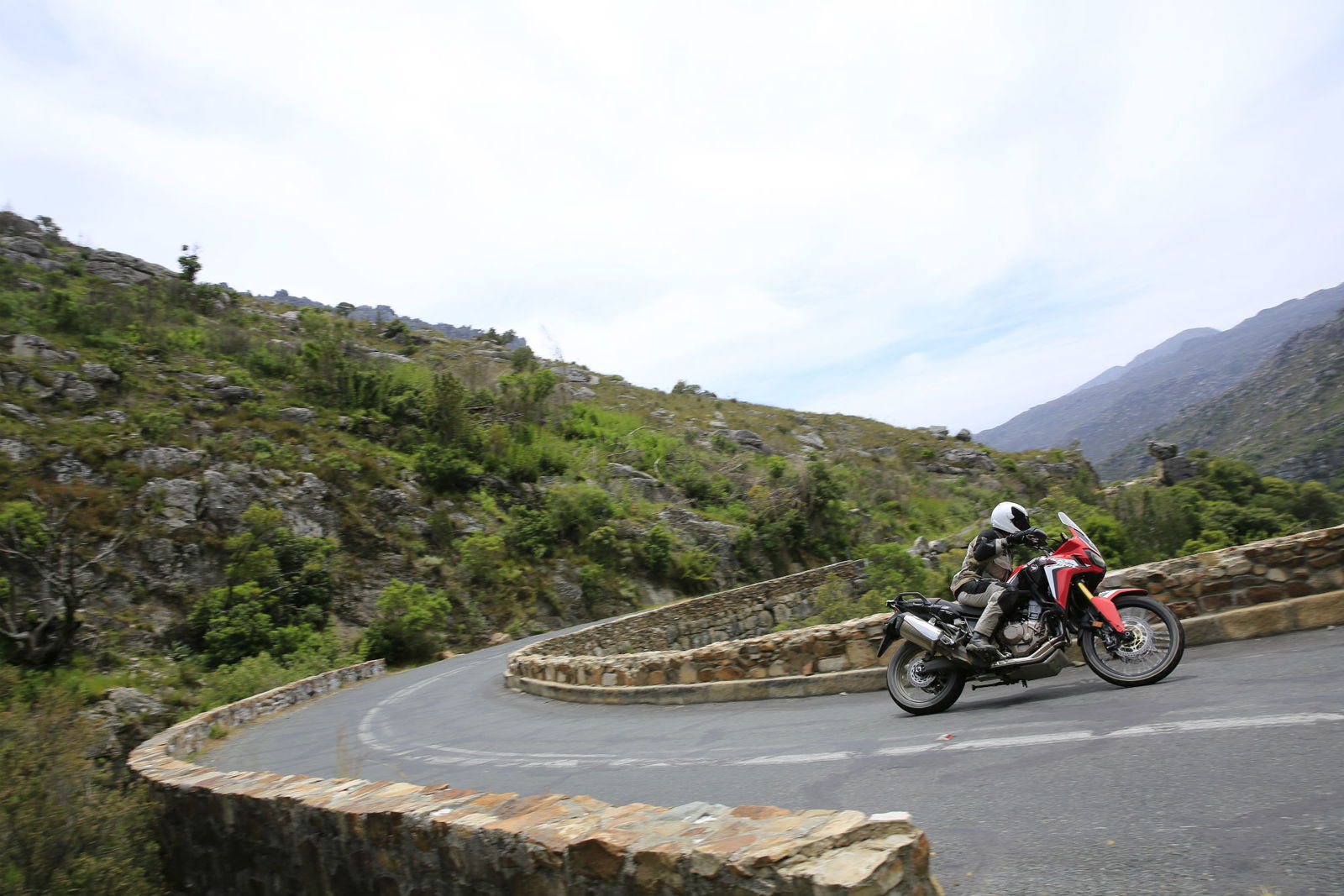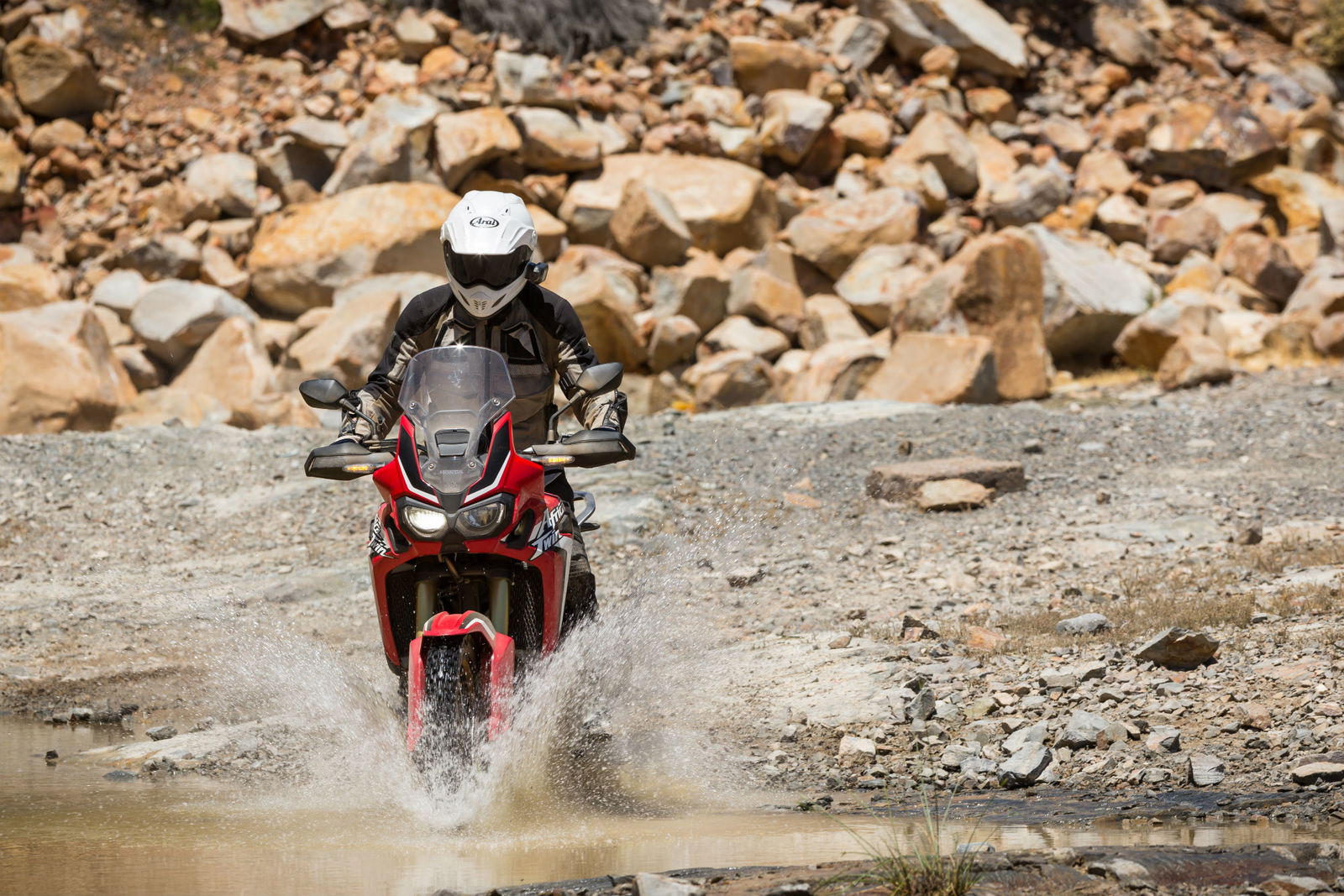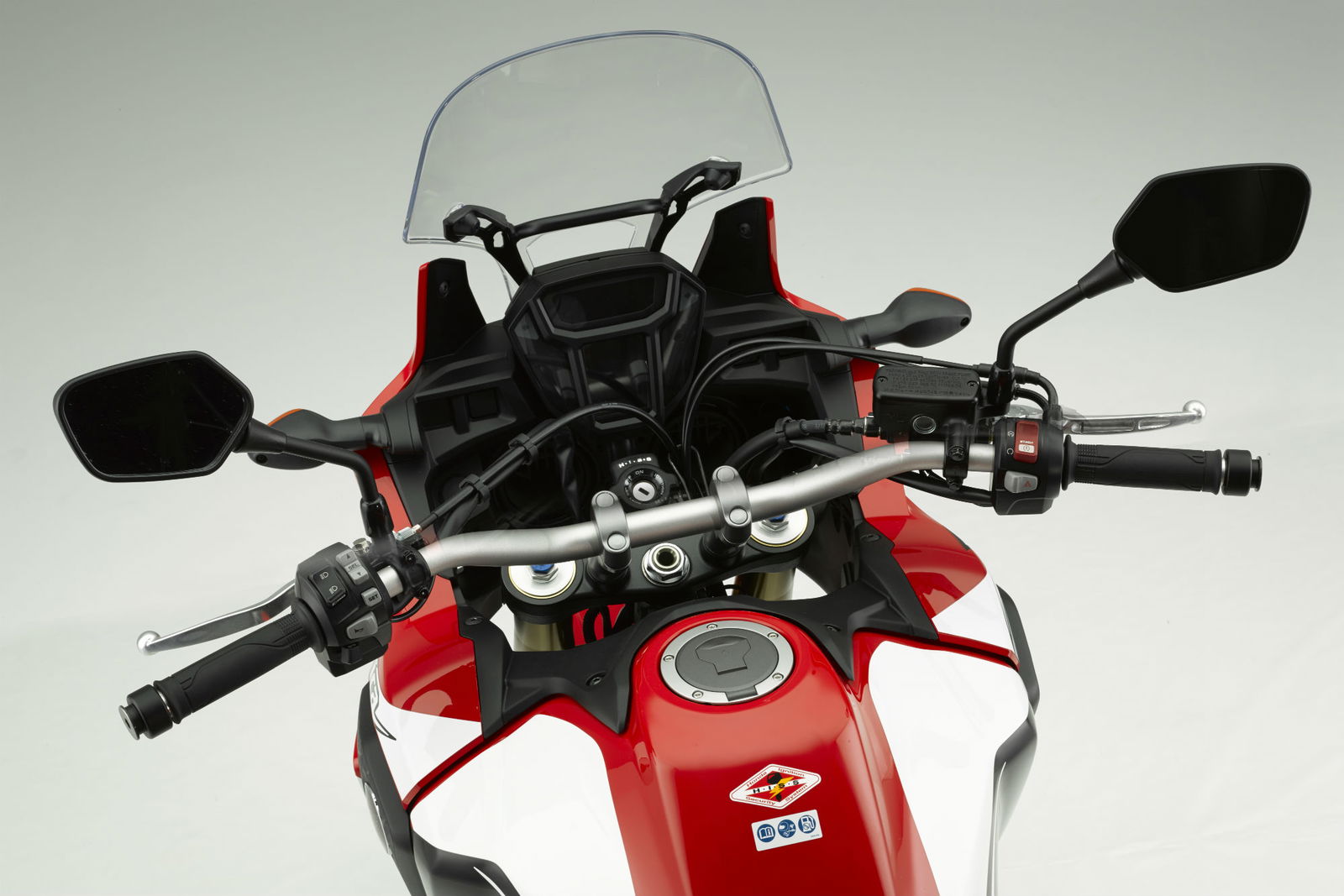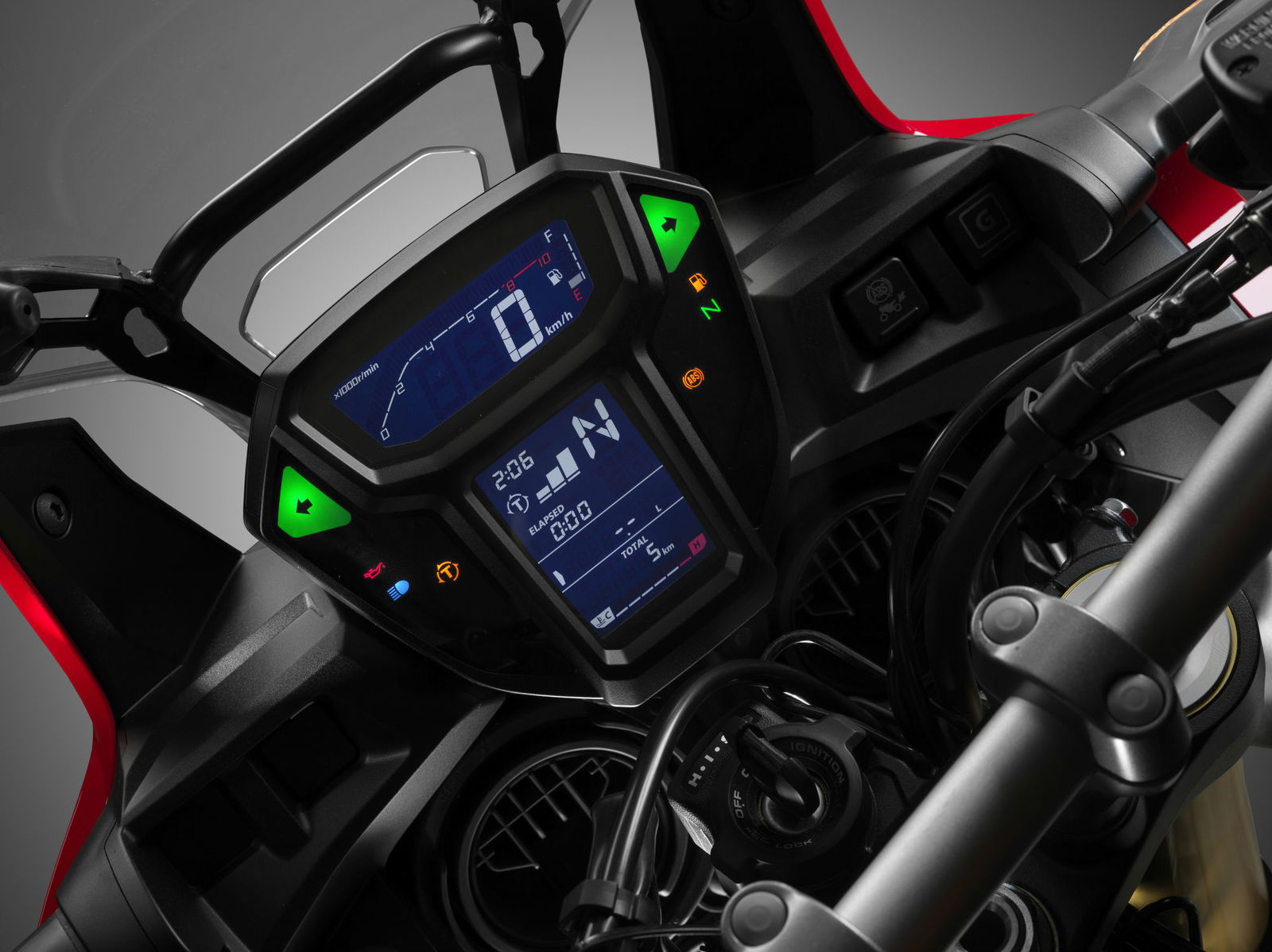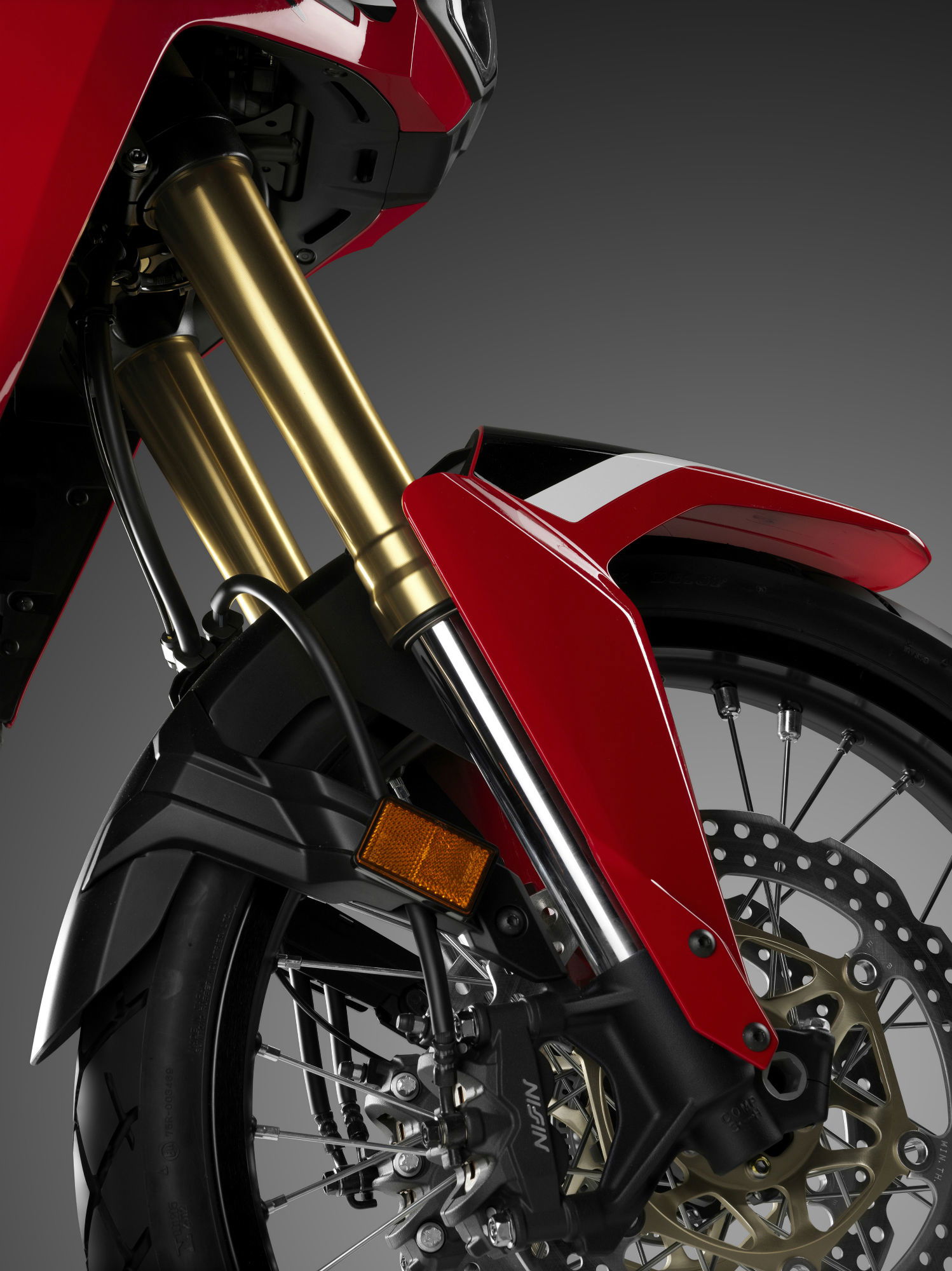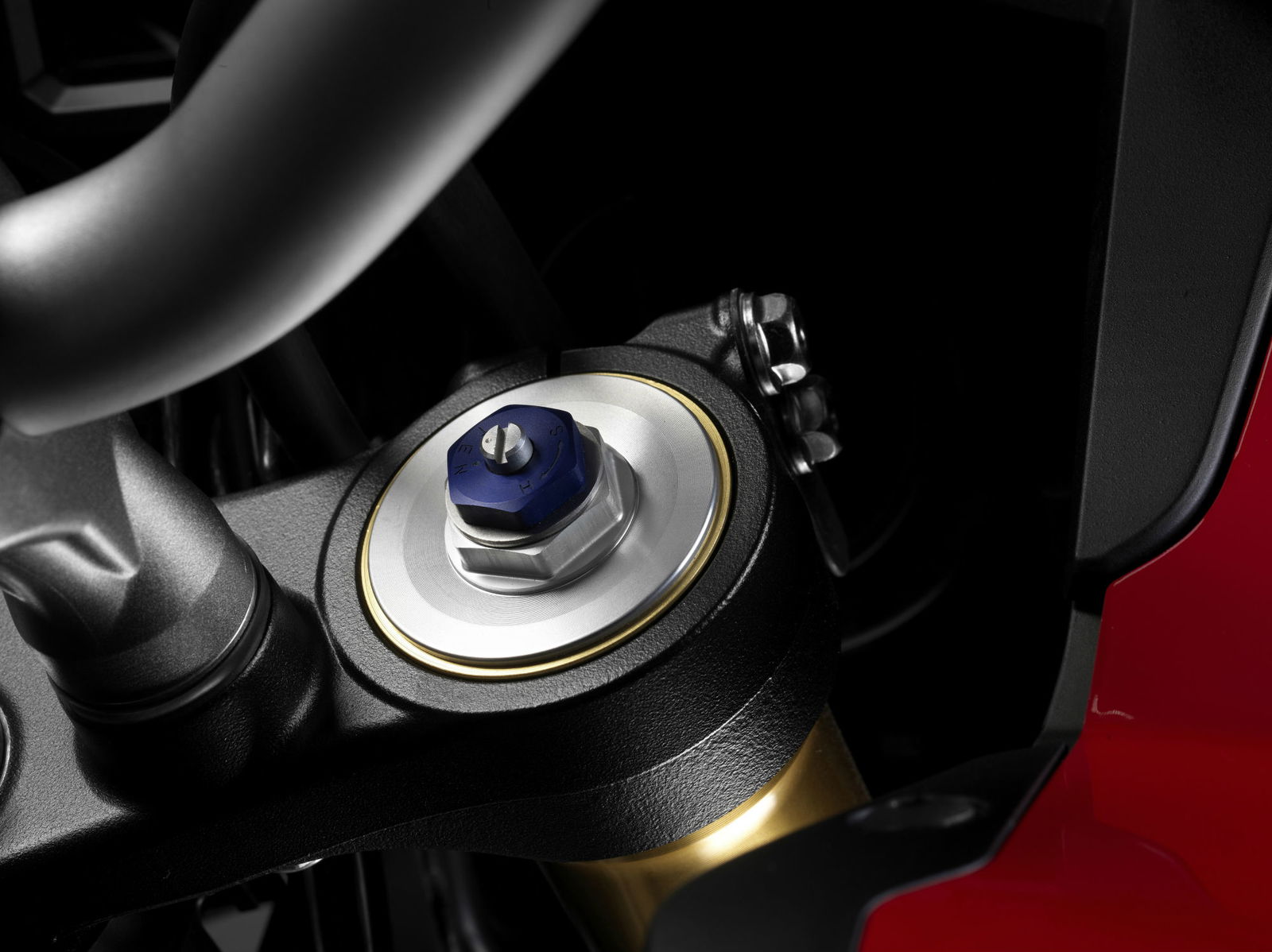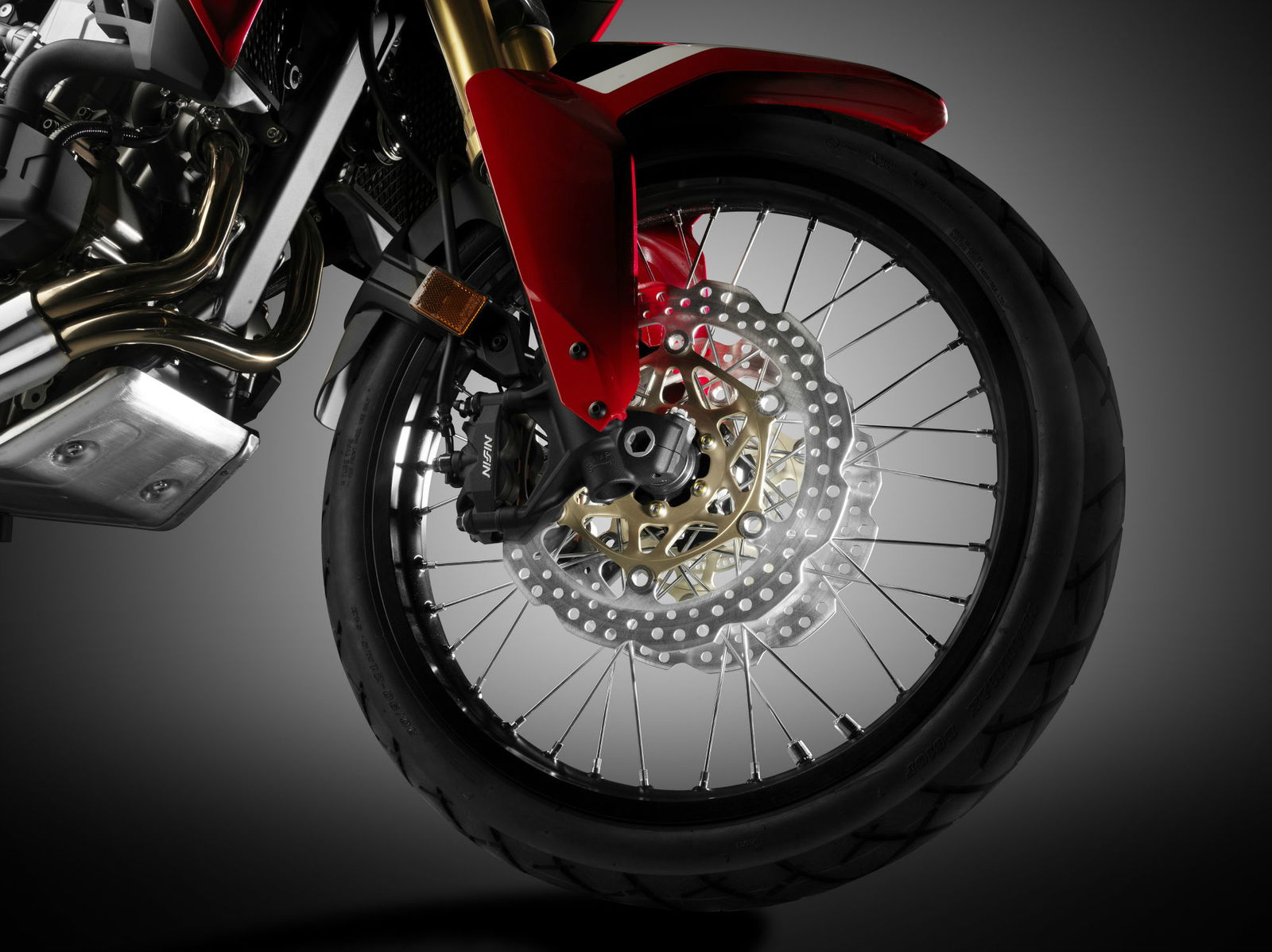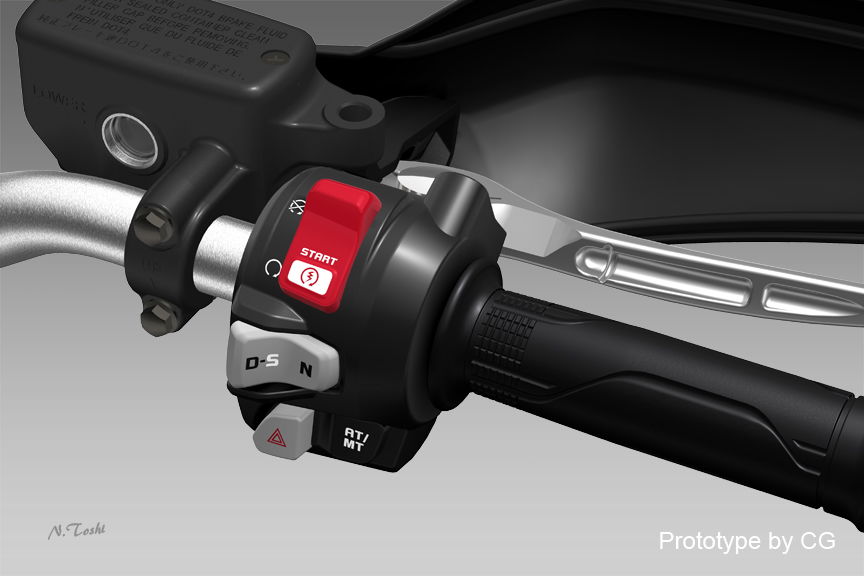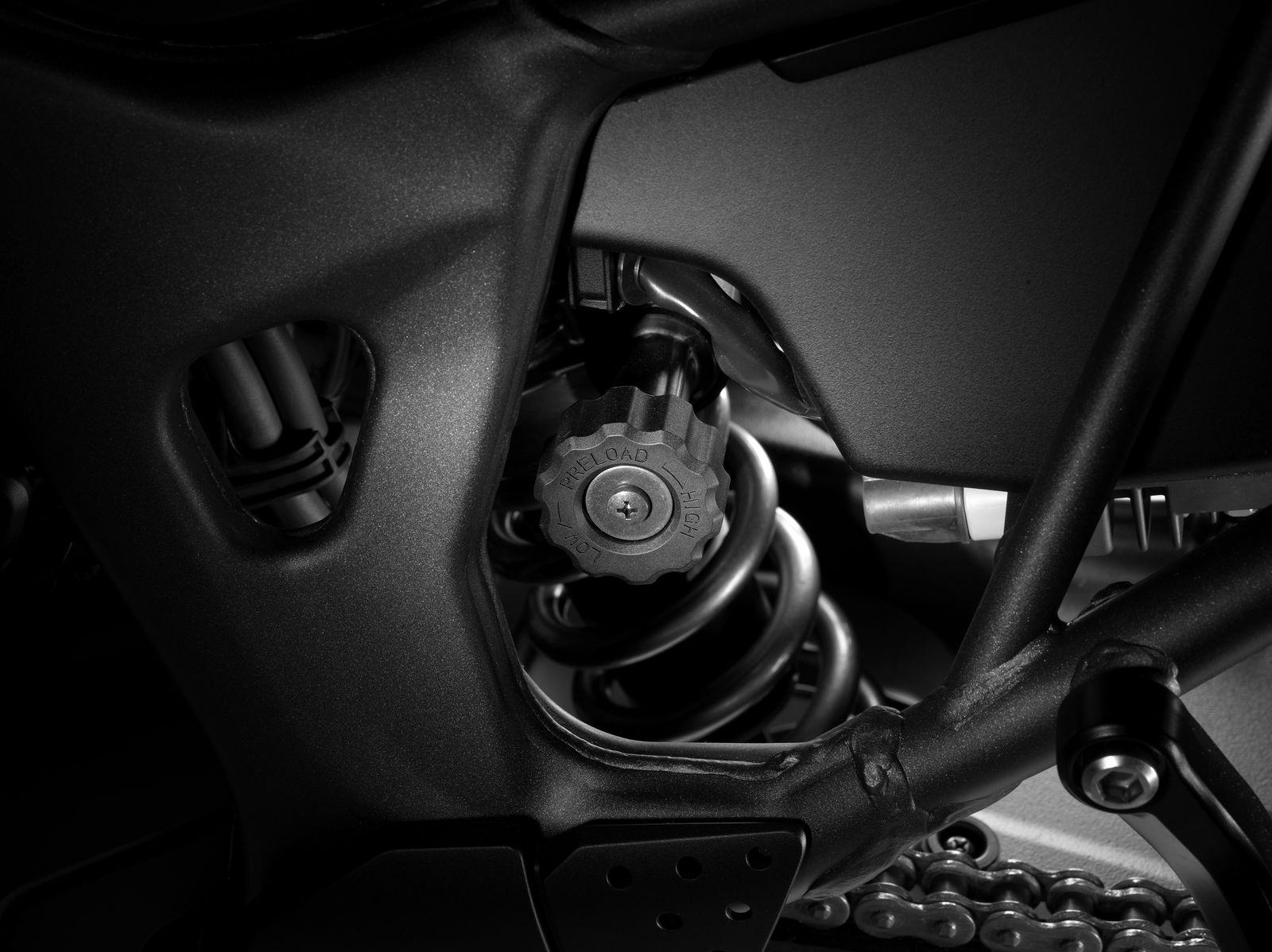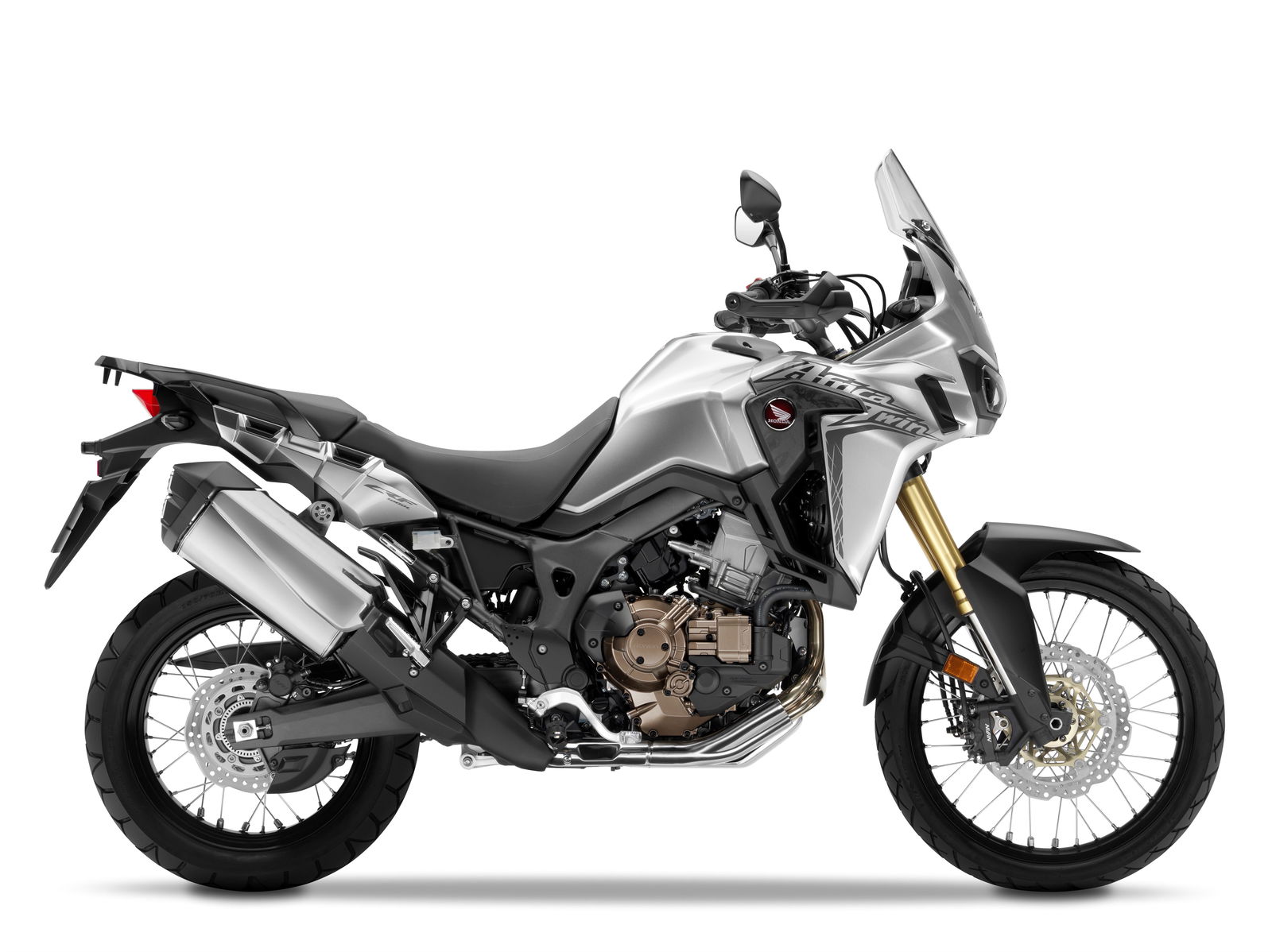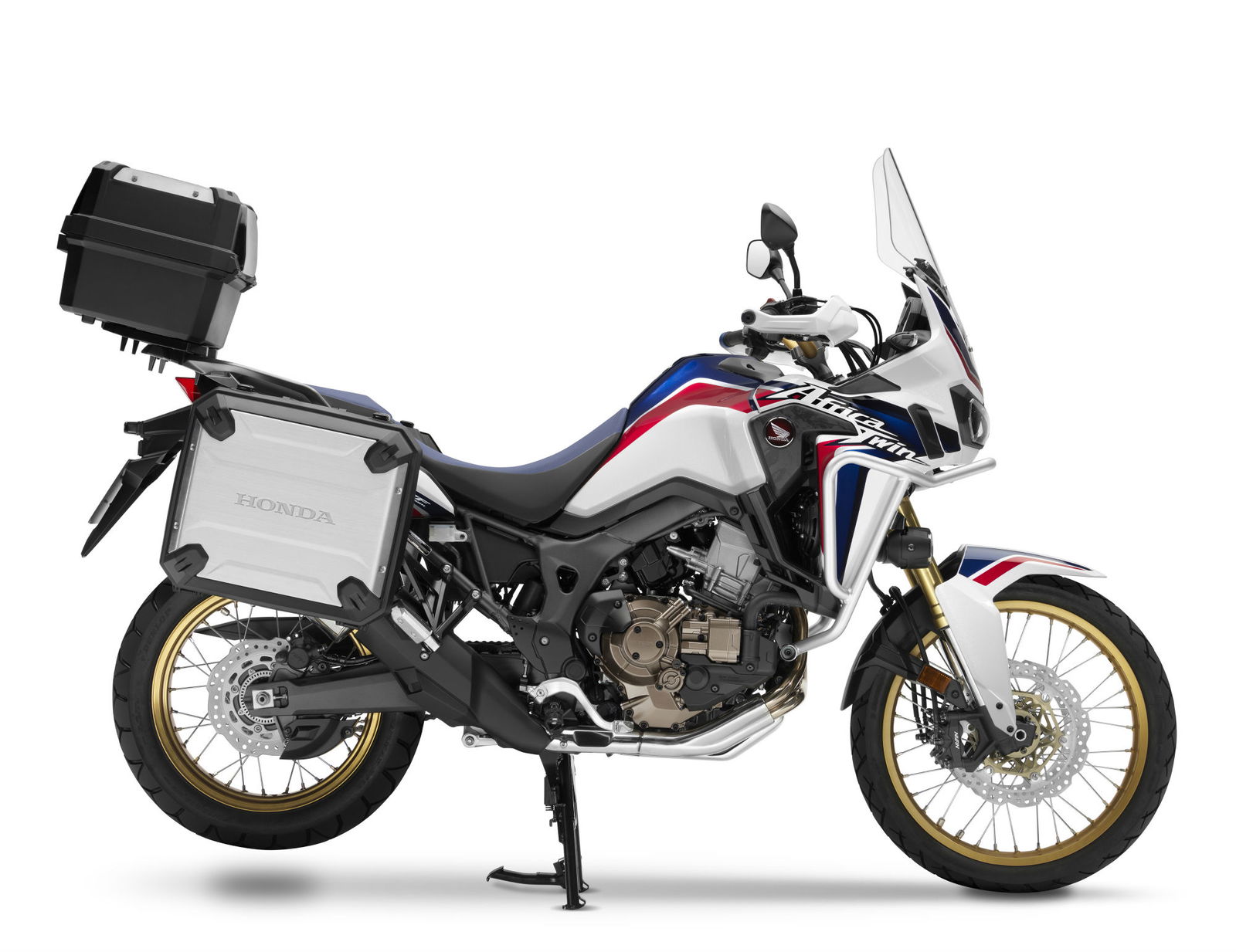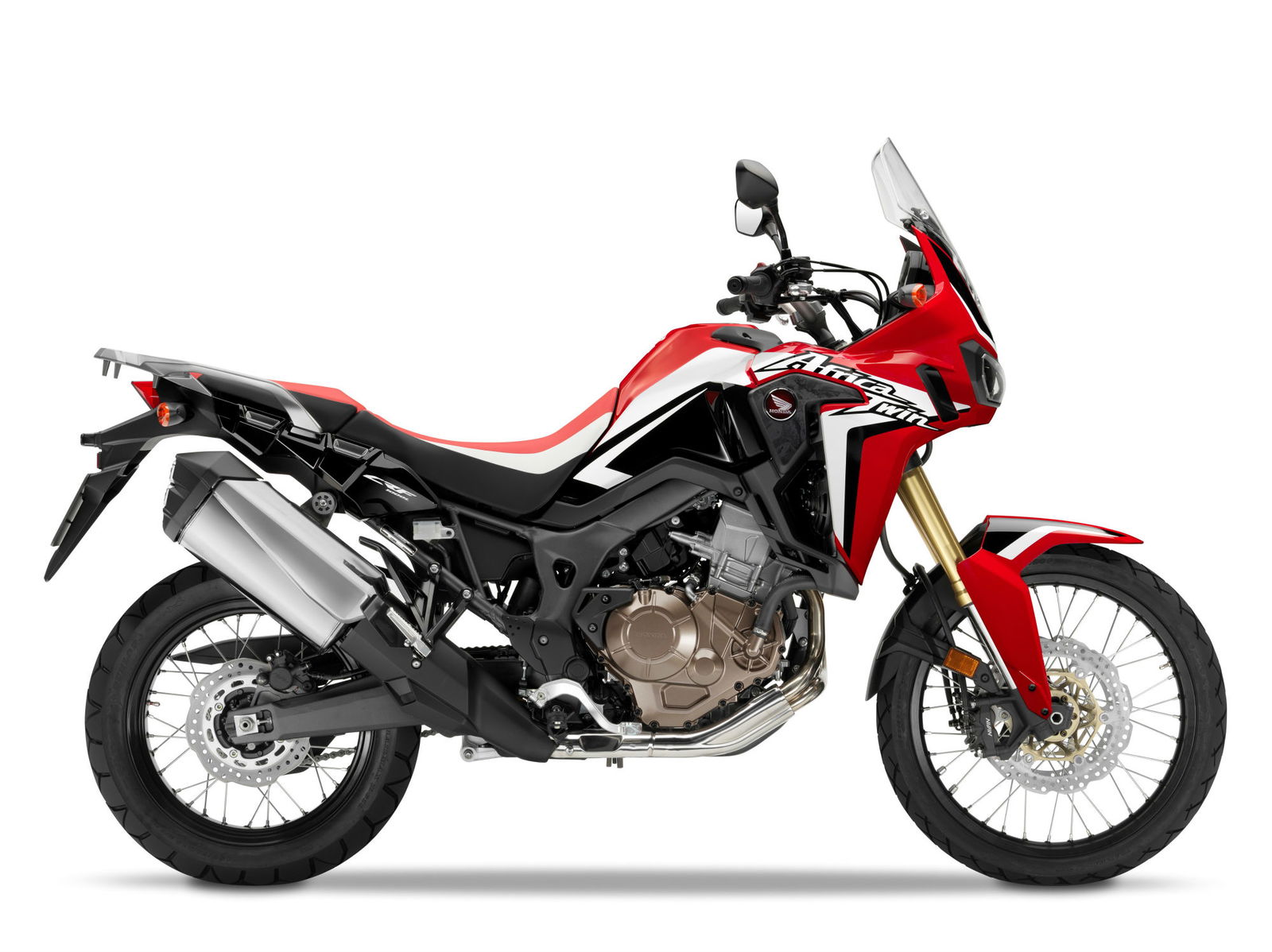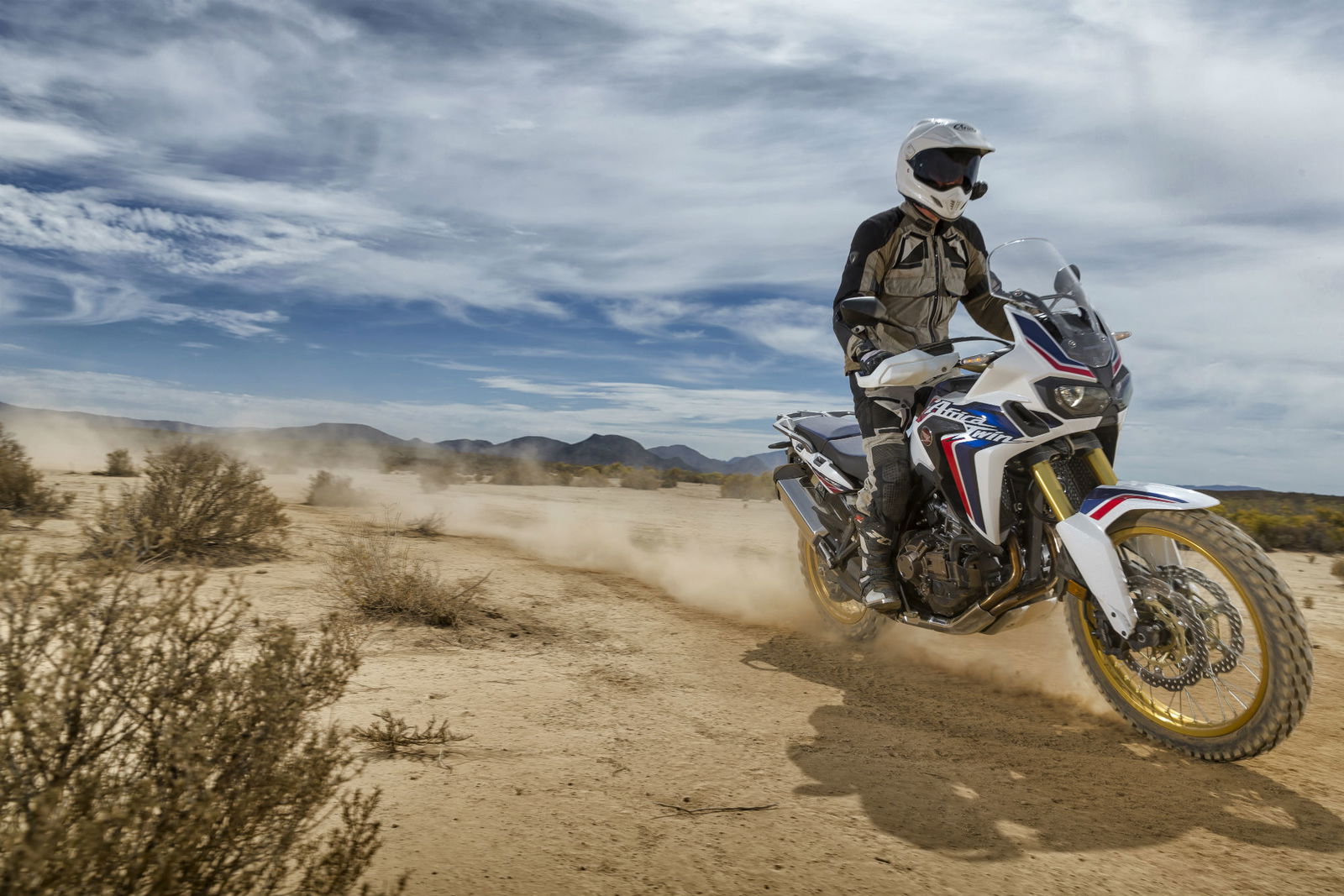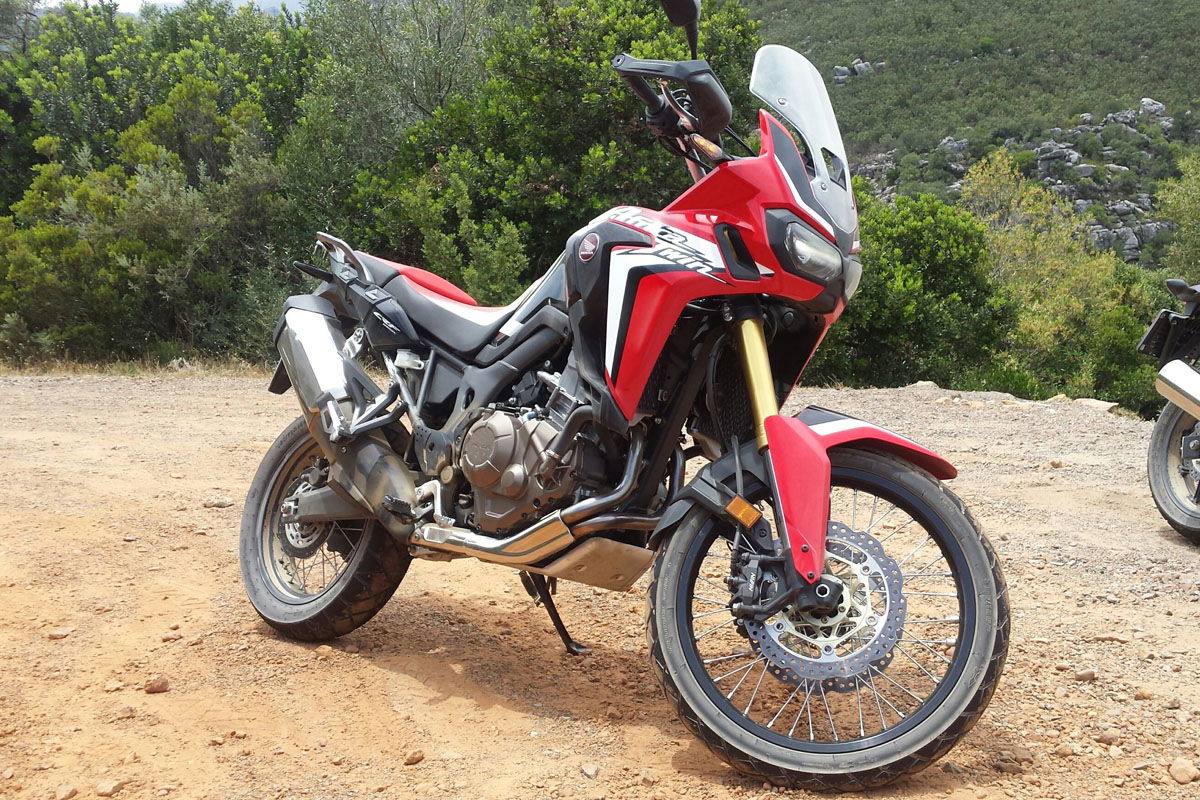First ride: Honda Africa Twin CRF1000L review
A real adventure bike
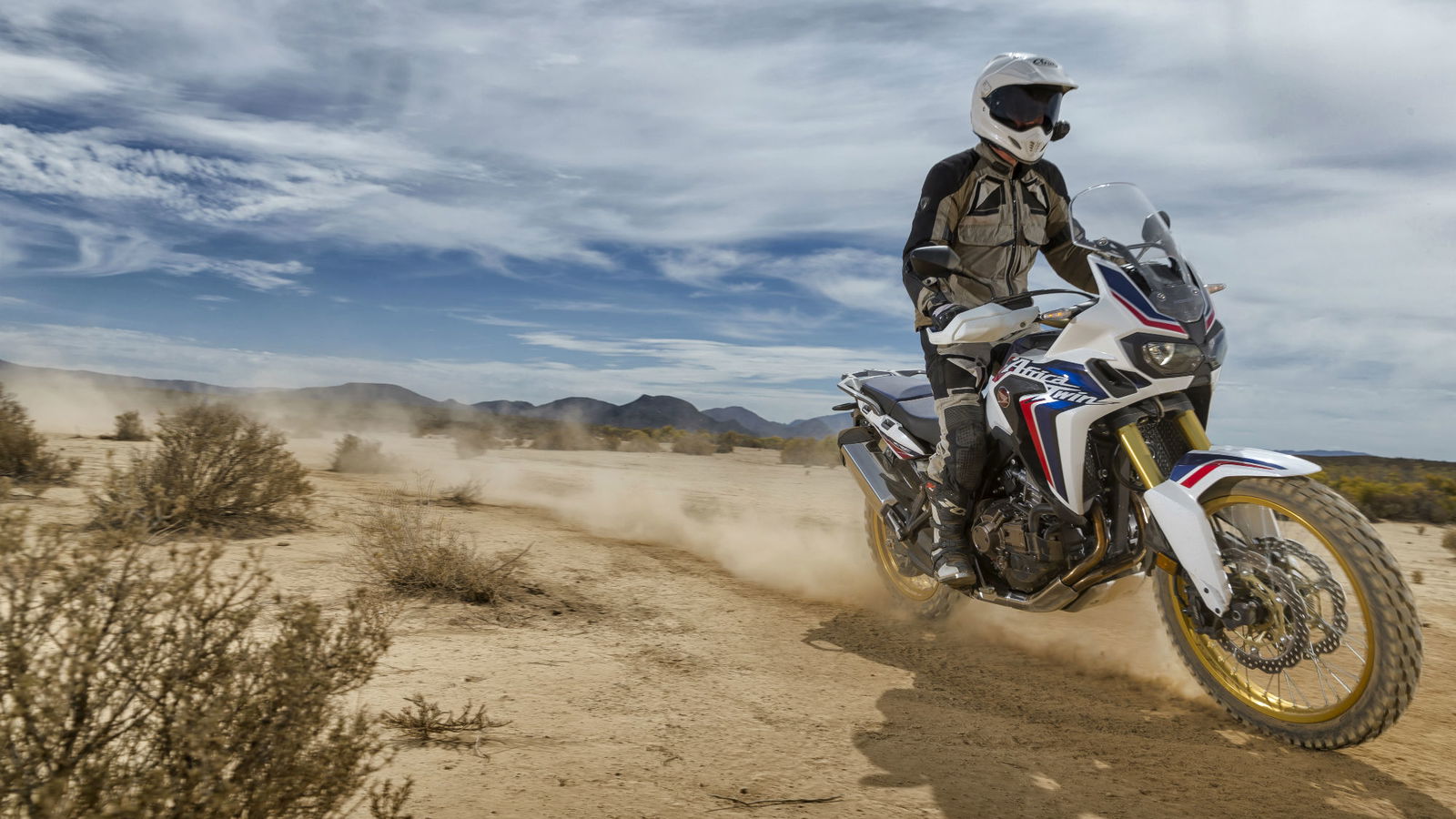
THERE'S no doubting the new CRF1000L Africa Twin is a very big deal to Honda. Already a revered name thanks to the original XRV650 and 750 of the '80s and '90s, the firm helped mythologise the Africa Twin brand further with a long, drawn-out introduction of this new incarnation.
It was first unveiled as the True Adventure Prototype at the back-end of 2014, leading to inevitable speculation that it was in fact the new Africa Twin. Honda confirmed that several months later, sparking fresh headlines all over the bike press.
It was unveiled again at this Autumn's American Expo show and yet again at Eicma in Milan.
Now, finally, it's here, and I've just finished day one of a two-day launch test ride in South Africa.
Since the specs were announced, some readers have dismissed it as too heavy and bulky to be capable off-road.
It's an assertion that is undermined the moment you see a 2016 Africa Twin close up. This is not a bulky machine by big adventure bike standards. It may weigh about the same as base-model R1200GS, at 232kg fuelled to the BMW's 230kg, but it looks more compact. It certainly seems smaller than the R1200GS Adventure, which is 260kg with its bigger 30-litre fuel tank.
At 5'9”, I take it as a given that I'll be on tiptoes on a big adventure bike. On some I'm right up there on the tips. On the Africa Twin, I can almost get both feet flat on the ground. It reminds me more of sitting on a BMW G650GS than an R1200GS.
The seat height is 870mm adjustable to 850mm (my bike was at the higher setting). There are tall and low seat options, one giving an 840/820mm height and the other 900/880mm.
The bike feels narrow between the legs, which also makes reaching the ground easier. It's something Honda boasted about in the presentation, enabled by the parallel-twin engine configuration where the original Africa Twins were V-twins.
At 94hp, that engine is quite a long way down on the big adventure bike competition. As I said in my first impressions report earlier today, the Africa Twin doesn't feel super fast but the power it has is super accessible thanks to a very linear delivery across the range. With a smooth throttle response, really gentle from the off, the 998cc plant feels a bit like a grown up, more powerful and higher-revving version of the parallel-twin from the NC750 range. The Africa Twin's engine is all new, with little in common with the NC one except the 270-degree crank and linear drive that characterises modern Hondas, according the firm. There's definitely some similarity of character between the machines – the same smooth, unsurprising build from a strong bottom-end to a stronger top - although the Africa Twin has a lot more go.
It's significant that the Africa Twin makes 94hp because it means it should be possible to restrict it for A2 licence holders.
The red line is at just below 8,000rpm, and there isn't the tendency to bump into it that you get with the NC, where it's at just over 6,000.
On twisty roads the Africa Twin has enough low-down drive to stay in a high gear through bends. It's strong enough in the mid-range and revvy enough to then accelerate fairly hard to the next corner without changing gear.
Once, on a fast bend, the Dunlop Trailmax dual-sport tubed tyres momentarily threatened to lose traction, I think at both ends but probably led by the 21-inch front. It was a moment that makes you lift the bike up a bit and think: did it just do that?
The front brake, which is the same as the CRF450 Rally's using radial four-pot Nissin calipers, is sharp but the front tyre sometimes struggled for grip under hard braking, the ABS activating as the bike's mass pitched forward on the long-travel fork.
ABS is part of an electronics package which also includes three-level traction control. Both can be deactivated, the ABS at the rear wheel only.
Changing settings is very simple, with no confusing menus. One button changes the traction control level and you can do it on the fly without closing the throttle. Hold it for three seconds and the TC is off. Another button deactivates rear-wheel ABS, although you have to be stationary for that one to work.
Slightly annoyingly, the settings return to defaults every time you turn the ignition off and even if you flick the kill switch. It means you have change them back to how you want them every time you start it.
There's also a DCT version of the Africa Twin, using Honda's automatic Dual Clutch Transmission, the same system that's available on the NC750 range and VFR1200. It uses two clutches (hence the name) one for even gears, the other odd. As one disengages first, the other immediately engages second, and so on, for ultra smooth changes with almost not interruption of drive.
The first generation of DCT had two automatic modes: 'D' and 'S', for Drive and Sport. Now there are four: D plus three different levels of S. There's also a manual mode, in which you choose gears yourself with button shifters on the left bar. Navigating and selecting the options is as simple as adjusting the traction control, using a button on the right bar.
It's a big improvement on that first generation of the system. Notably on the VFR1200, the difference between D and S was too great. In town, D would have you in fifth gear and S in second, when you wanted third or fourth. The lower of the three S modes now offers a compromise between those two, while the highest S mode is sportier still than the old one. Meanwhile, D now adapts to your riding, so if you hold the throttle open more it knows you probably also favour a lower gear for optimum acceleration.
It's still not perfect though. The highest S mode held on to low gears for too long for me. Shut off and the engine braking provided by the mid-range is denied because you're still in the top end.
The middle or lower S mode seemed better, but sometimes still chose the wrong gear. Overtaking, I'd open the throttle wide and it would immediately shift down to give me the drive I requested. After overtaking, I might back off but it would still hold that low gear. I'd override by shifting up with the button. Then, after a few seconds of constant throttle, the system would take it upon itself to up-shift again, and I'd change back down.
On the NC750 range, DCT is great because it deals with the idiosyncrasies of the machine. It stops you bumping into the red line at the top of the short gears and spices up a flat power curve by giving you the maximum 54hp all the time. The Africa Twin doesn't have these specific idiosyncrasies, with its higher-revving motor and greater power, so I'm unsure of the benefit DCT brings to the experience.
A Honda man pointed out that if we lived in a world where DCT came first, gears would seem inconvenient. It's possibly true, but we don't live in that world, and gears are second nature to most riders.
Day one of the test ride consisted of tarmac and gravel roads. Bigger off-road challenges come on day two. I'll reserve final judgement on the DCT until then. Honda says it detects when you're going up or down hill and holds a low gear appropriately. That's potentially interesting.
On the gravel roads, that broad useable spread of power meant I didn't have to worry too much about changing gear over gentle climbs and descents and sweeping turns. I probably changed gear more than necessary. Easier just to leave it in one and enjoy the scenery. In level one, the traction control lets the back spin and kick up the gravel.
Here the Africa Twin's compact dimensions help too. It's all very well for the off-road elite to jump on a GS and make it look like a lightweight enduro bike. For the more ordinary, like me, a compact machine reduces the intimidation factor on dirt, even if weight is the same. It's psychological but important – it makes it easier to enjoy yourself.
Towards the end of the day we descended a steeper, bumpier, dustier gravel track. Standing on the pegs of the DCT model, the bike felt narow between my knees and the bar-shift buttons proved a slick, easy way to change gear, making my left foot redundant. If you want, there is a conventional gear selector which you can use instead.
The R1200GS is the sales phenomenon of the big adventure bike market and Honda's clearly aiming for some of that dollar. The problem is, the intimidation factor is probably part of the appeal of the GS, and actually going off road may not be for most. Just days ago, A GS-devotee I happen to know commented that he wasn't interested in the Africa Twin because it looked like an off-road bike and he wasn't an off-road rider. Instead he loves the GS for its brilliance on road.
Honda says the 270-degree crank and irregular firing intervals give the engine a characterful 'pulse feeling' – but it doesn't have the rumble of the GS. The Africa Twin makes a good thumping noise at low revs but as it really gets going it again reminds me of an NC750 (hear for yourself in my on-board video).
Like the GS, it would make an excellent long-distance tourer. The seat and riding position are comfortable, the screen about chin-height for me and the engine vibrations barely there.
I don't know if it will take customers from the GS - but after day one of this test I think it would be my choice.
Model tested: Honda CRF1000L Africa Twin
Price: £10,499 (£11,299 with DCT)
Engine: 998cc liquid-cooled parallel-twin
Power: 94hp @ 7,500rpm
Torque: 72lbft @ 6,000rpm
Kerb weight: 232kg (non-DCT model)
Frame: Steel semi-double cradle
Suspension: 45mm fully adjustable USD fork with 230mm of travel. Fully adjustable shock with 220mm of travel
Brakes: Front 310mm wave floating discs, two-piece radial-mounted four-piston calipers. Rear 256mm wave disc.
Wheels: Wire-spoked 21" x 2.15" front and 18" x 4" rear
Tyres: Dunlop Trailmax 90/90-21 front and 15/70-18 rear, tubed
Seat height: 870mm (low position 850mm)
Fuel capacity: 18.8 litres
Claimed fuel economy: 61.2mpg (61.5mpg for DCT model in Drive mode)
Colours: black, silver, 'Victory Red' or 'Tricolour'
Day two: off road
The Africa Twins were fitted with knobbly Continental Twinduro tyres for this part of the test, which raised the seat a few millimetres, giving it a more typical adventure bike height. The route consisted of rutted, dusty, rocky, trails, with deep sand in places and a mild hill climb. I couldn't quite believe the automatic DCT would select the right gears to get me to the top. I was doubtful enough to seek clarification from a Honda rider. I could rely on it, he said. So I did, and he was correct.
In the least aggressive of the three Sport modes, it kept me in the right gear. My speed changed with the gradient and surface but the system made the necessary shifts to keep me in drive and momentum. I only felt the need to shift for myself once or twice, for a bit more acceleration approaching a steeper section or a bit more engine braking on the way back down. The system can't see what lies ahead, after all.
When you do want to override the DCT with a gear choice of your own, the button shifters on the left bar make it improbably easy. The up-shift button is on the front of the bar and the down-shift on the back, so your thumb and forefinger fall on them naturally from a standing position.
On a second run up the hill, I selected the highest traction control level, the one that intervenes most readily, to see if it would allow me enough traction to reach the top. I also chose the DCT Drive mode, which favours higher gears than Sport. Now the DCT kept selecting a gear higher than I wanted. I'd shift down and it would change back up. The traction control cut drive as the tyre slipped over the rocks, and there was a moment when I thought I might be losing too much momentum - but I chugged to the top.
The system would be of huge benefit to beginner off-roaders. The bar switches will remove the initial awkwardness of shifting gear while standing up, while the level-three traction control could help them get up a gradient steadily and surely, or pull away on loose earth without accidentally going sideways.
But I also think it gives an advantage to the mildly experienced off-roader. For the trails, I was back in Sport mode and traction control level one, which let the rear drift a satisfying and flattering amount. Again I found the need to make few shifts for myself. With less attention occupied by gear selection, more was free to focus on other demands, like staying on the gas as the front and back wheels took different routes through deep sand.
Because DCT is designed to make gear shifts as seamless as possible, there's also a 'G' mode which makes them more abrupt to provide more instant traction on dirt. Press a button on the dash (with a 'G' on it) and it's on.
I said after day one that I wasn't convinced the DCT Africa Twin was more convenient than the manual one, since gears are second nature to most riders. But as I swapped DCT for a manual Africa Twin off road, I did feel inconvenienced. I had to start using my left foot and making gear decisions again.
So far I'd been riding the DCT version all morning, but the transmission system couldn't take all the credit for the good time I'd been having. Doubters will probably continue to argue that the Africa Twin's 232kg weight means it can never be very useful off road (until they try it at least). Of course it's more of a handful than a lightweight single, but it doesn't feel like a big adventure bike either.
The problem with a really big bike off road is that for many riders it eats away at confidence, which makes them go too slowly, which makes them fall off or get stuck or both. The Africa Twin feels more like a middleweight. The skinny profile gives you space to move, to shift your weight forward while standing on the pegs and still feel the narrowness between your knees.
But 94hp is not middleweight power. With its strong spread of torque, rapid acceleration is only ever a few rpm away. And the Africa Twin does have the capacity of a big adventure bike to limit the impression of speed off road. The smoothness of the engine, weight of the machine and competence of the suspension mean you can find yourself at 60mph before you know it.
I found myself getting faster as the day went on, accelerating through ruts, not backing off for bumps or holes, not worrying too much about the changing surface but just pointing the Africa Twin where I wanted it to go, keeping on the gas and keeping the faith.
At the first showing last year, Honda called it the True Adventure Prototype. I'm calling this production version a real adventure bike. A 232kg machine that really can go anywhere, be it on tarmac with luggage and a pillion or on dusty South African trails. A big bike that's actually useful off road, and not just in the hands of an advanced off-road rider but for the more ordinary of us too.
WATCH OUR FULL VIDEO REVIEW OF THE 2016 HONDA AFRICA TWIN HERE
Model tested: Honda CRF1000L Africa Twin
Price: £10,499 (£11,299 with DCT)
Engine: 998cc liquid-cooled parallel-twin
Power: 94hp @ 7,500rpm
Torque: 72lbft @ 6,000rpm
Kerb weight: 232kg (non-DCT model)
Frame: Steel semi-double cradle
Suspension: 45mm fully adjustable USD fork with 230mm of travel. Fully adjustable shock with 220mm of travel
Brakes: Front 310mm wave floating discs, two-piece radial-mounted four-piston calipers. Rear 256mm wave disc.
Wheels: Wire-spoked 21" x 2.15" front and 18" x 4" rear
Tyres: Dunlop Trailmax 90/90-21 front and 15/70-18 rear, tubed
Seat height: 870mm (low position 850mm)
Fuel capacity: 18.8 litres
Claimed fuel economy: 61.2mpg (61.5mpg for DCT model in Drive mode)
Colours: black, silver, 'Victory Red' or 'Tricolour'
